September 29, 2019
Martha O'Kennon

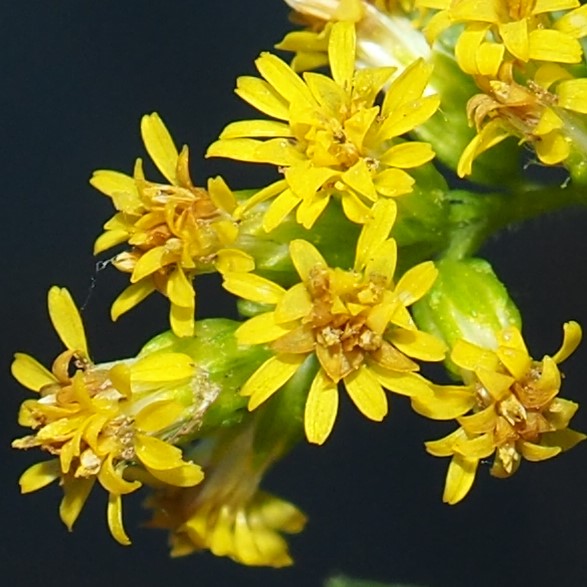
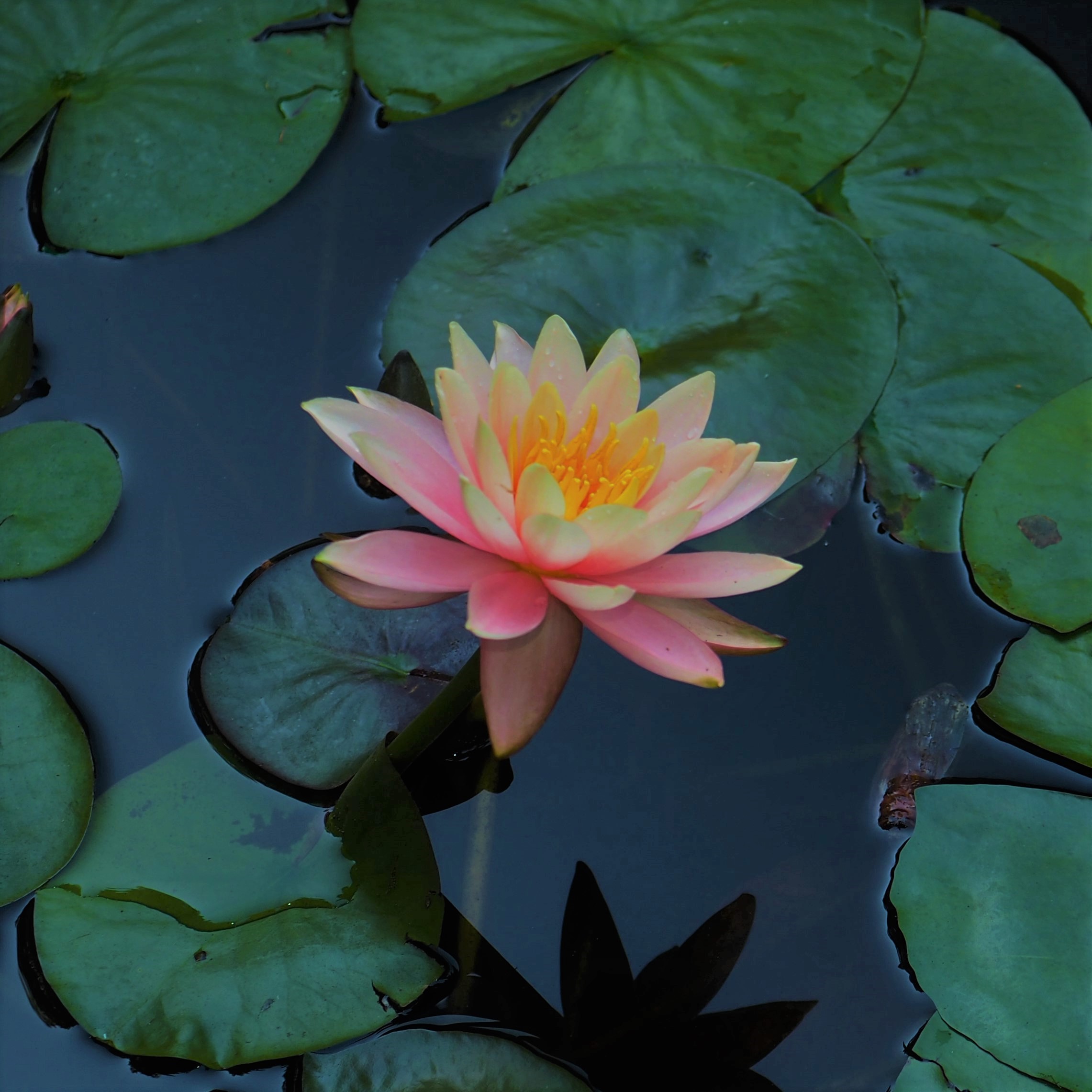
Almost all the gold is gone from the Goldenrod. The brown is beginning to show some of the cottony stuff that will soon predominate. Still there is enough gold still to attract a few insects and a tiny few tiny spiders. But now the Asters dominate the Goldenrod. We will see more of them. A momentary gust of life suddenly comes from the Colchicums. Their leaves came out in the spring and died down. But now the flowers appear. Their stems can't really support the huge crocus-like blooms and so they fall all over each other. But beautifully! The Water Lilies are slowly calling it a year. The large pink ones come out in ones and twos, more ones than twos. Here we see the Colchicums, the Goldenrod, and the pink Water Lily.
Remember that there is information in the name of the file for each image. You can see it by mousing over the image - look at the lower left of the screen. Or you can click on the image to get to the (usually) larger image. Then the info is displayed in the address line above. Sometimes the second click will actually display a different view of the original image.
The ants are far less obvious than before. But try to follow this progression. A green Assassin Bug has caught a fly and is having a snack of it. Perhaps it's my presence that causes it to hesitate and the fly to escape. Picture 2 shows the Bug wondering where the Fly got to. (Hint: it's right underneath the leaf he's standing on.)
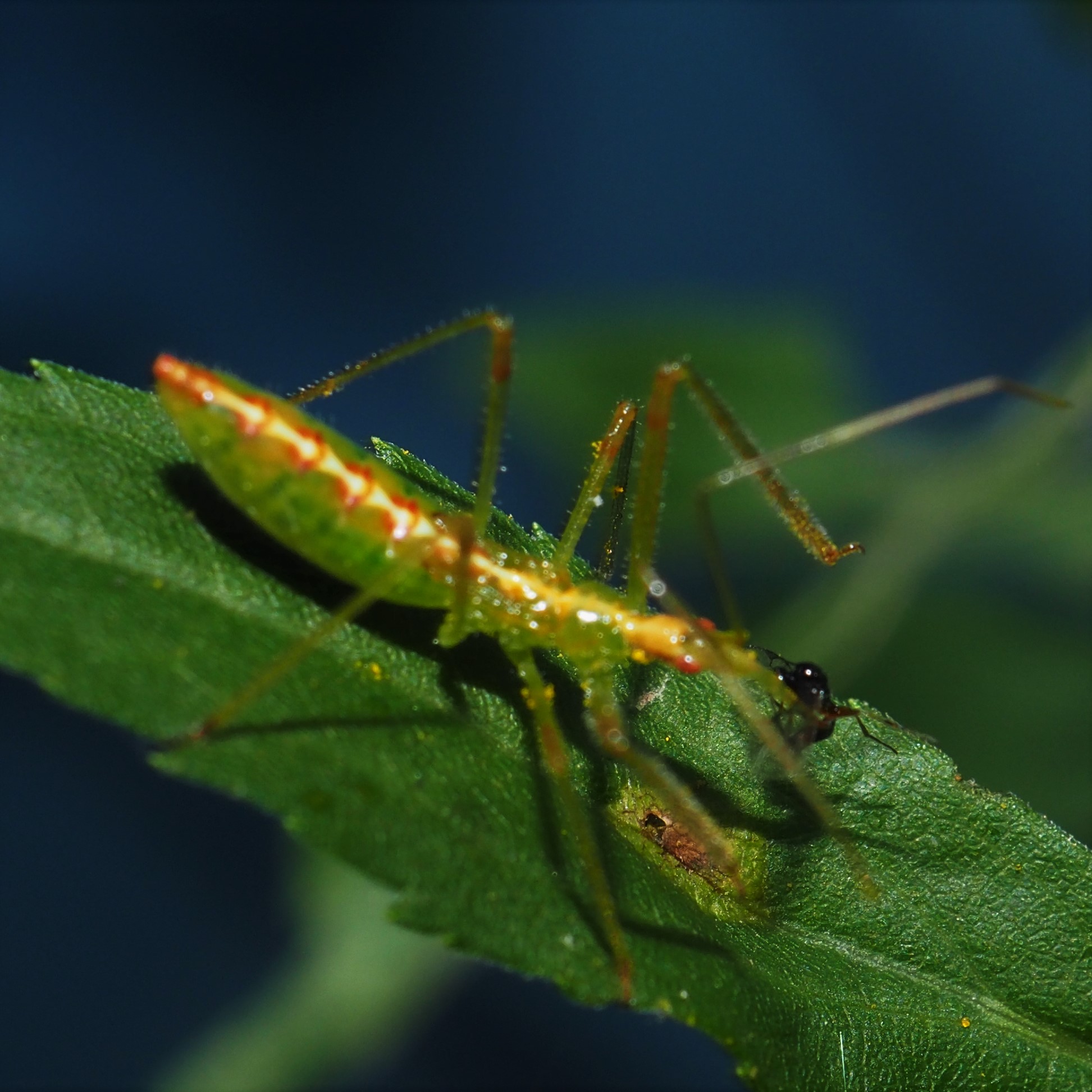
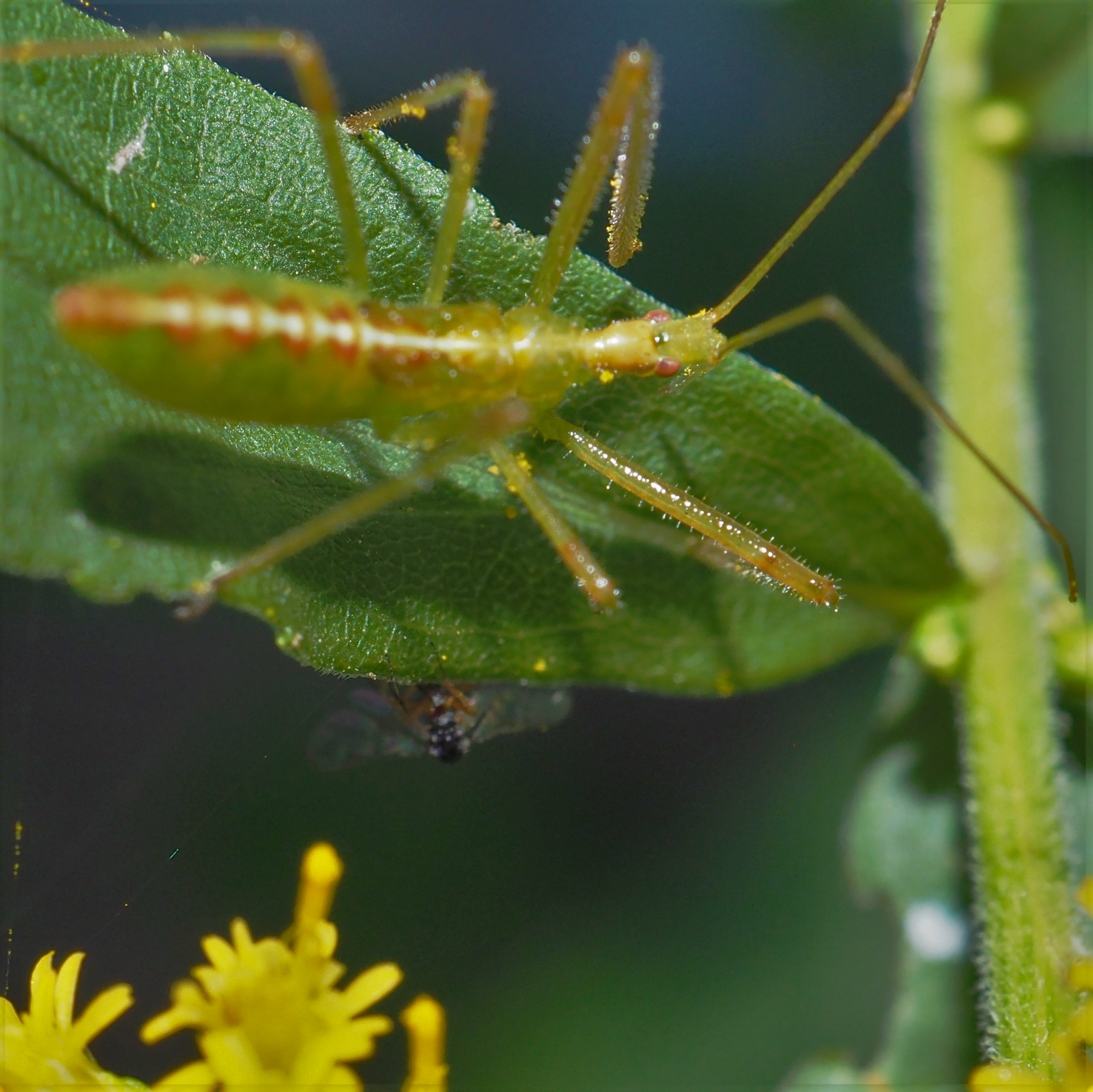
Now the Bug is under the leaf where the Fly fell to, but by now the Fly is far to the left of the scene. Now look up at the goldenrod above the Bug. Do you see black threads and green bits among the flowers? The last image is from another place where a green insect is revealed - an Aphid. Although we haven't seen them this summer, they are now big enough to find in a few places. And this is probably what is above the head of our Bug.
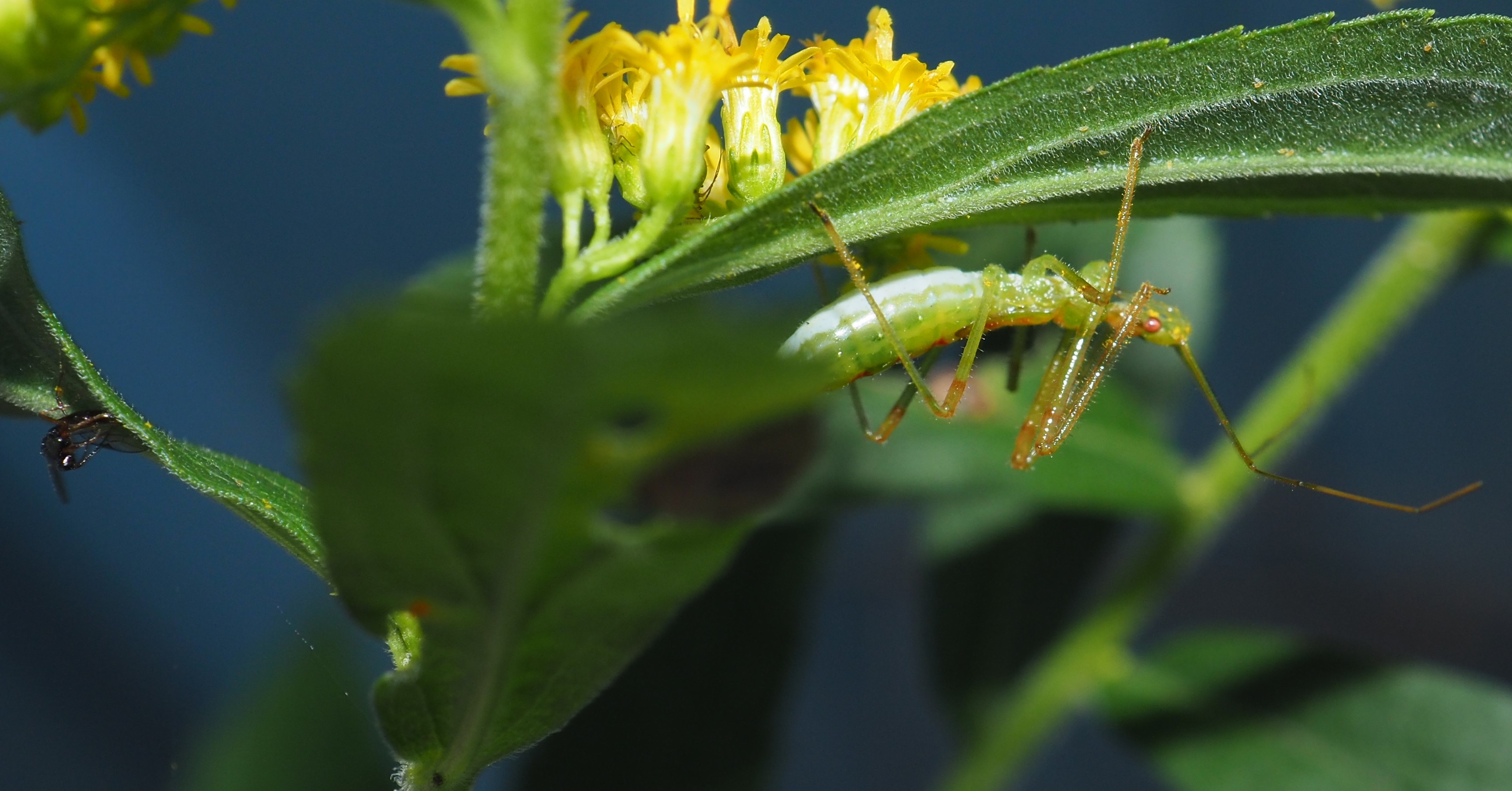
Now you can see that the black threads were the legs and antennae of some kind of tiny insect. The last image is from another place where a green insect is revealed - an Aphid (two in fact). Although we haven't seen them this summer, they are now big enough to find in a few places. And this is probably what is above the head of our Bug.

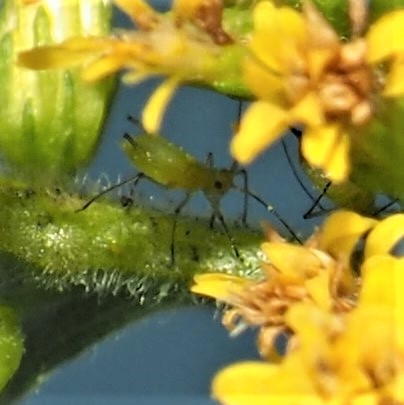
Although the ants were mostly not very visible, the Barklice were with us. First up, an OLD friend Metylophorus novaescotiae. Then another old friend that is just coming back here. Hadn't seen it since July. They seem to appear and disappear in waves. Third is a sighting in May. Its name is Graphopsocus cruciatus but I like to call it the Tiger Barklouse.
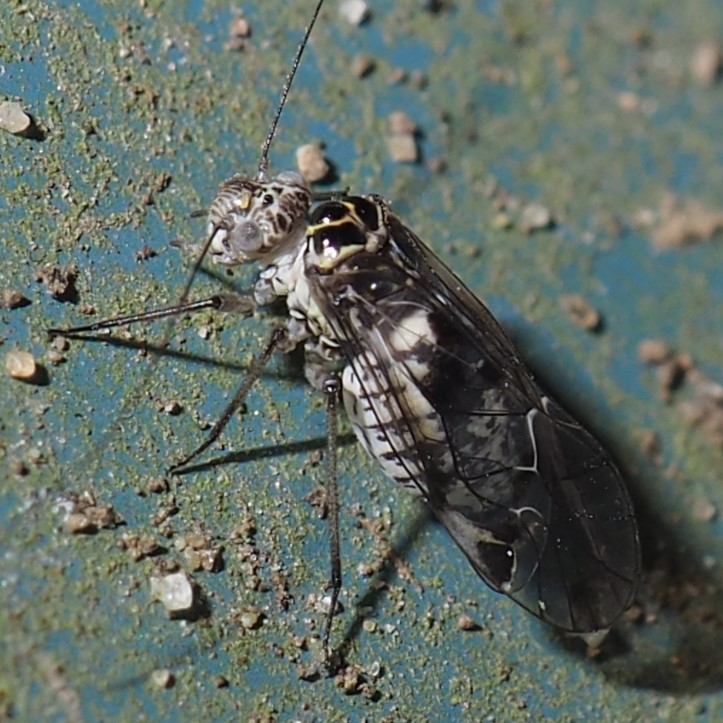


This Barklouse (Polypsocus corruptus) was probably the most-spotted creature in this yard - it showed up in June and has never gone away. Second has been here before and I think it is Trichadenotecnum alexanderae. They seem to show up here from August through November. I like its subtle coloring. Third is another subtle mystery - look at the pattern of "beads" on its antennae.

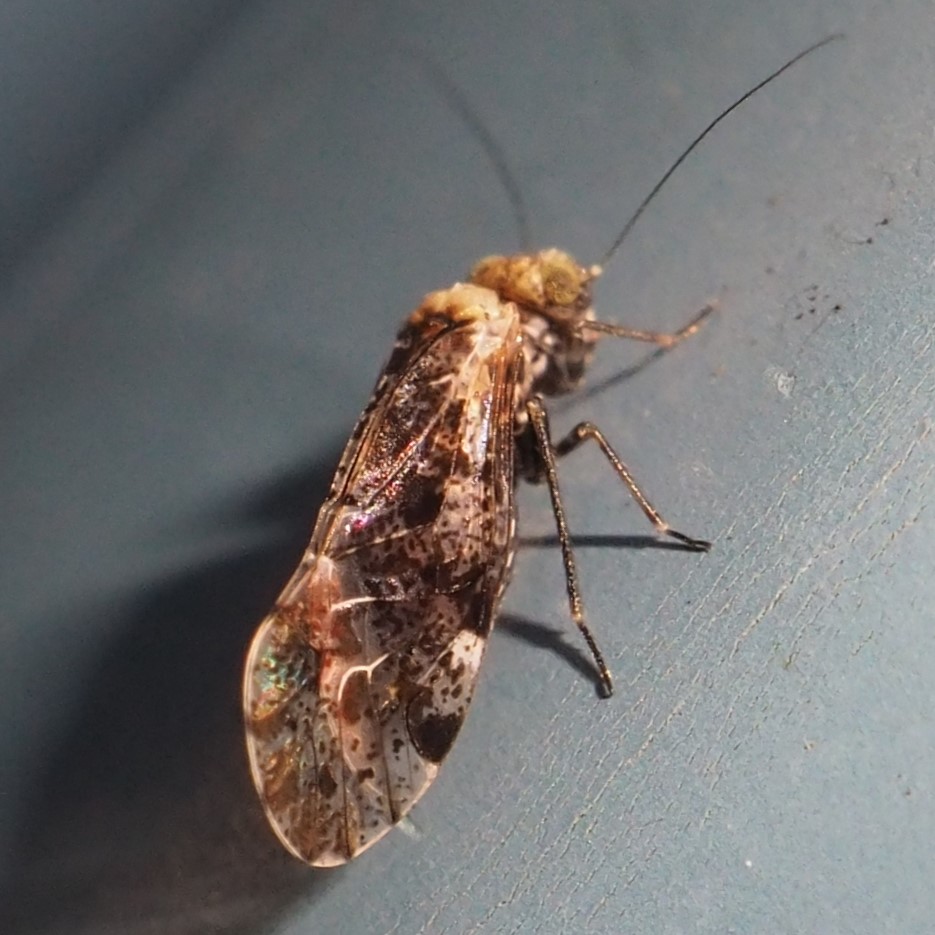
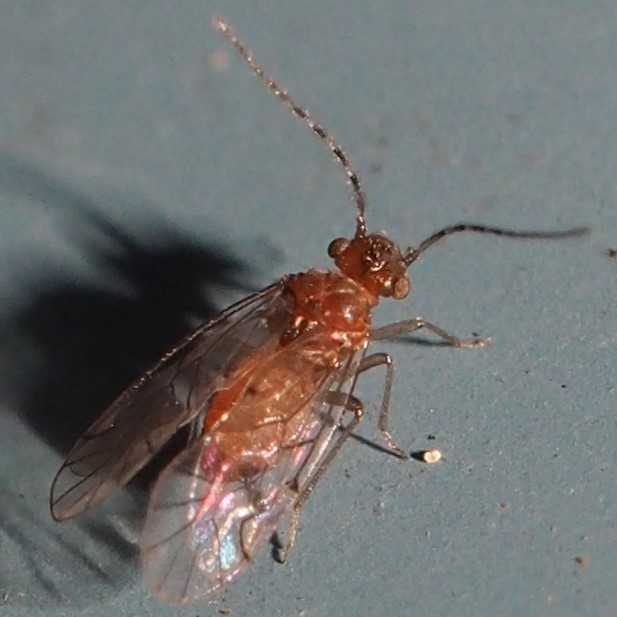
Here are a few more unidentified probable barklouse. The third one is especially striking. I had guessed it was a Psyllid, but Chris Mallory says it is another Aphid. Never saw one so pretty!

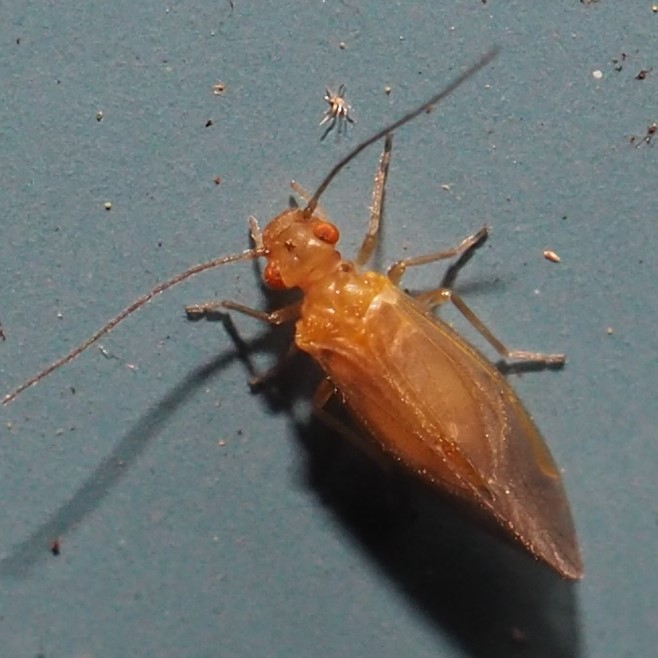
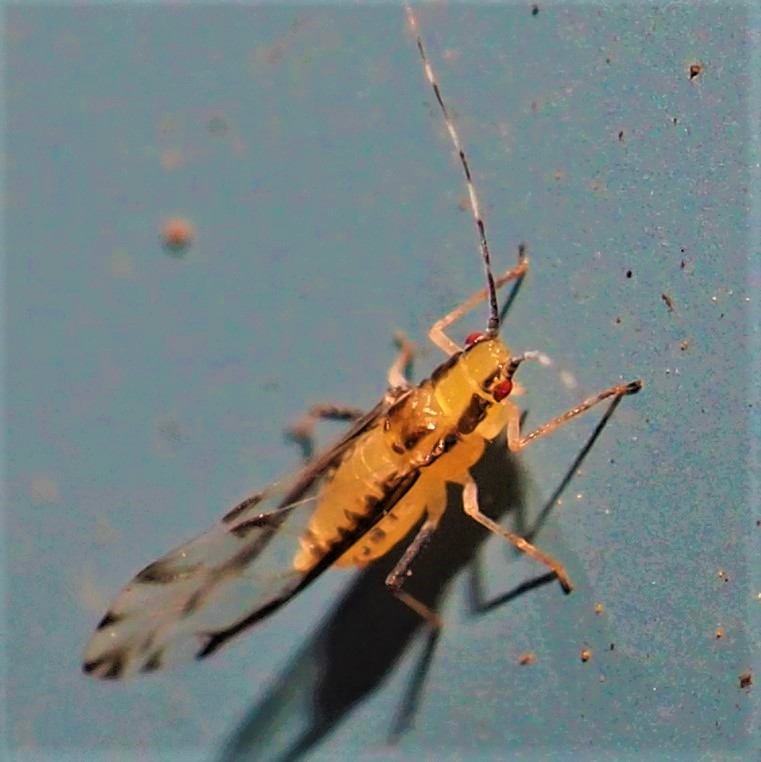
Here are a few Bees. First is a small mystery, then probably a bee of genus Lasioglossum. Third is probably one of the green Sweat Bees. What a green!
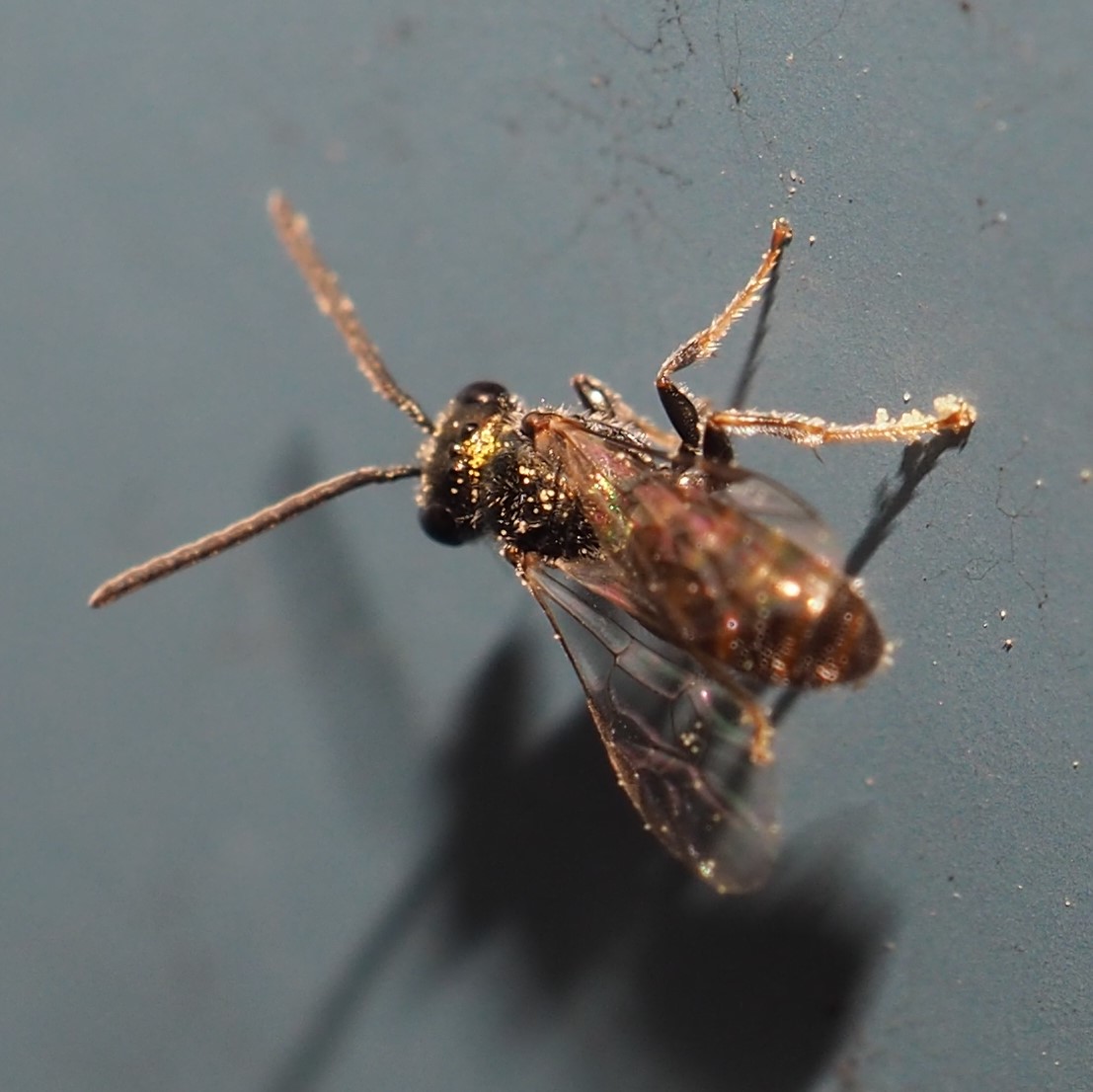
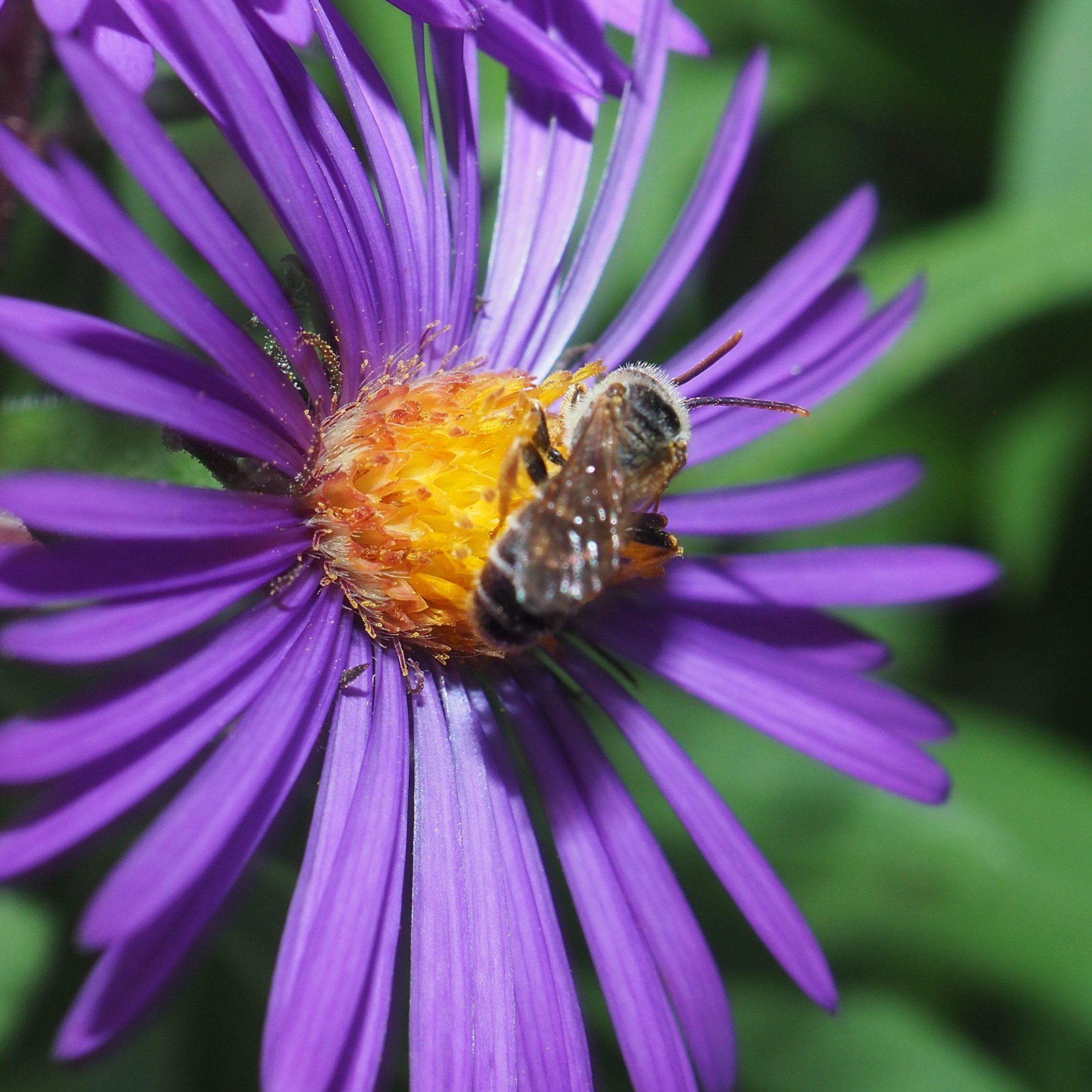

A hungry little Honey Bee. It's got a lot o' pollen on its legs. Second is an unknown (to me of course) bee - but what is hiding behind the Purple Aster? Looks like a couple of Crab Spider legs. Another sneaky little thing is mostly hidden behind the aster petals. The end looks like that of a wasp. I don't know what the beige wing-like thing is...
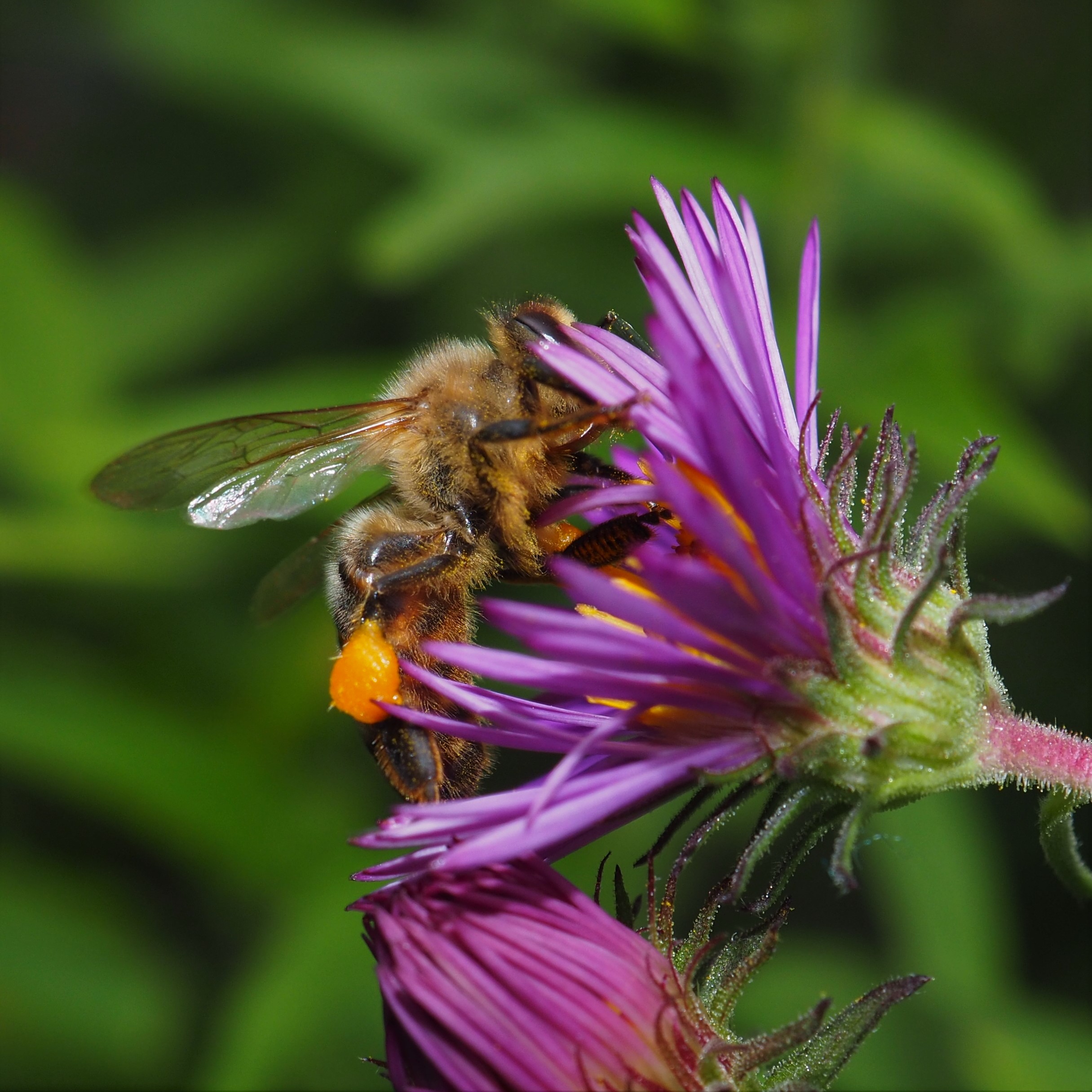

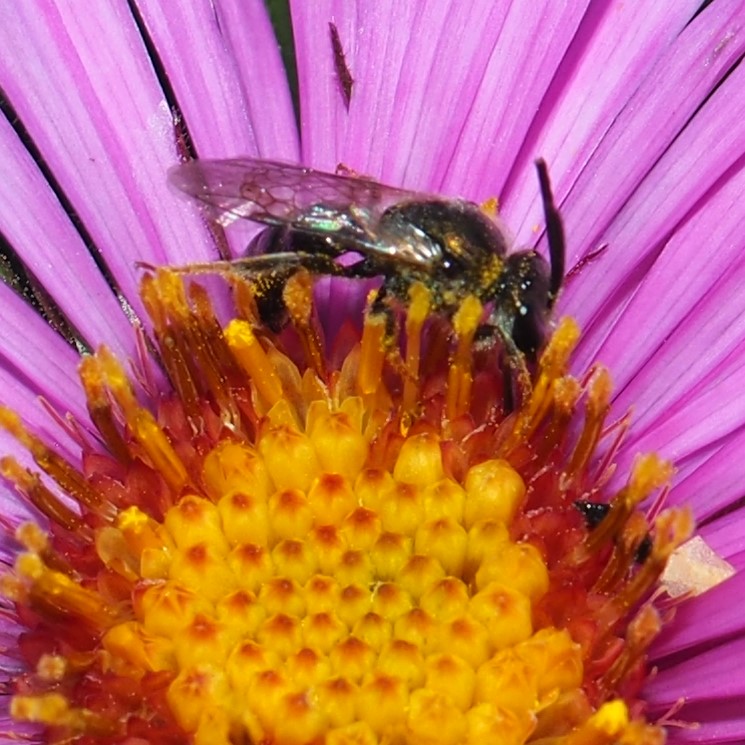
On to the Beetles. It wasn't a big week for them, but here is what there was. First is a Spotted Cucumber Beetle. Second is unknown, and so is the third one, which seems to be a hairy Weevil of some kind. Fourth is another Weevil, the Redbud Bruchid, sitting on one of the remaining few spots of yellow Goldenrod. The Redbud Bruchid reminds me of a Cottontail Rabbit.

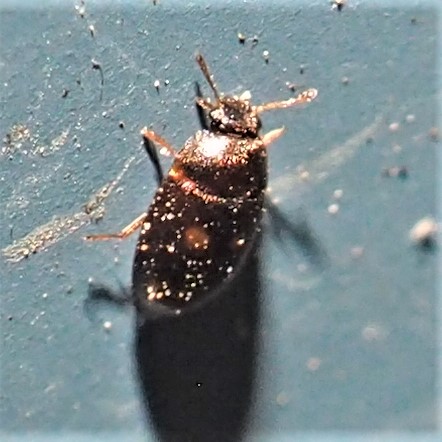


I know, I know, I've already introduced the Pale Green Assassin Bug, but that was just a means to an introduction of that Aphid way back there. This one happened to have its face in the sun. You can see its rostrum ("slurpy-maker") tucked safely under its chin. We also had a scad o' Leafhoppers - so many kinds, so many colors. Here is the ever-popular Candy-striper, and another in a darker location.
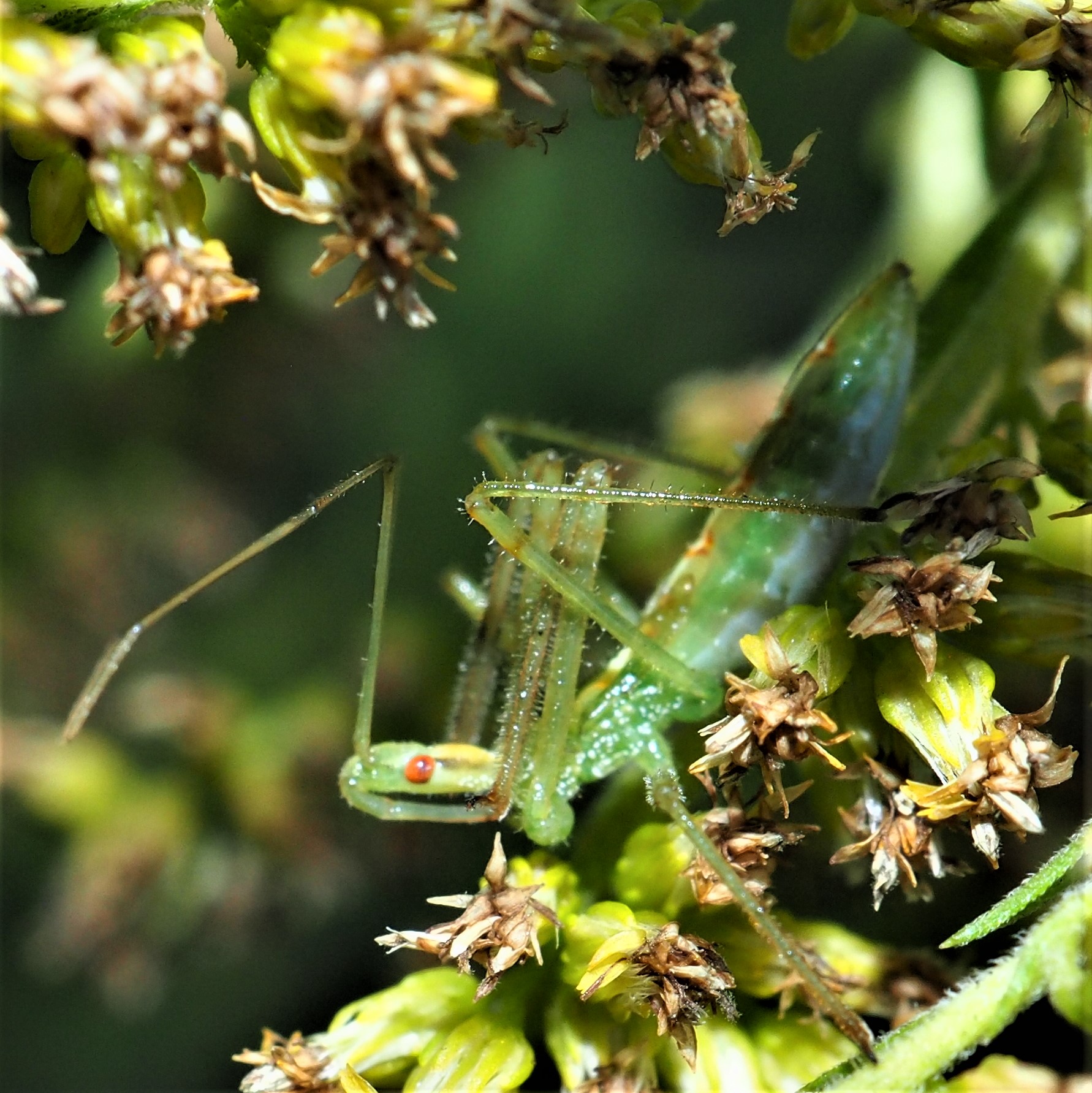
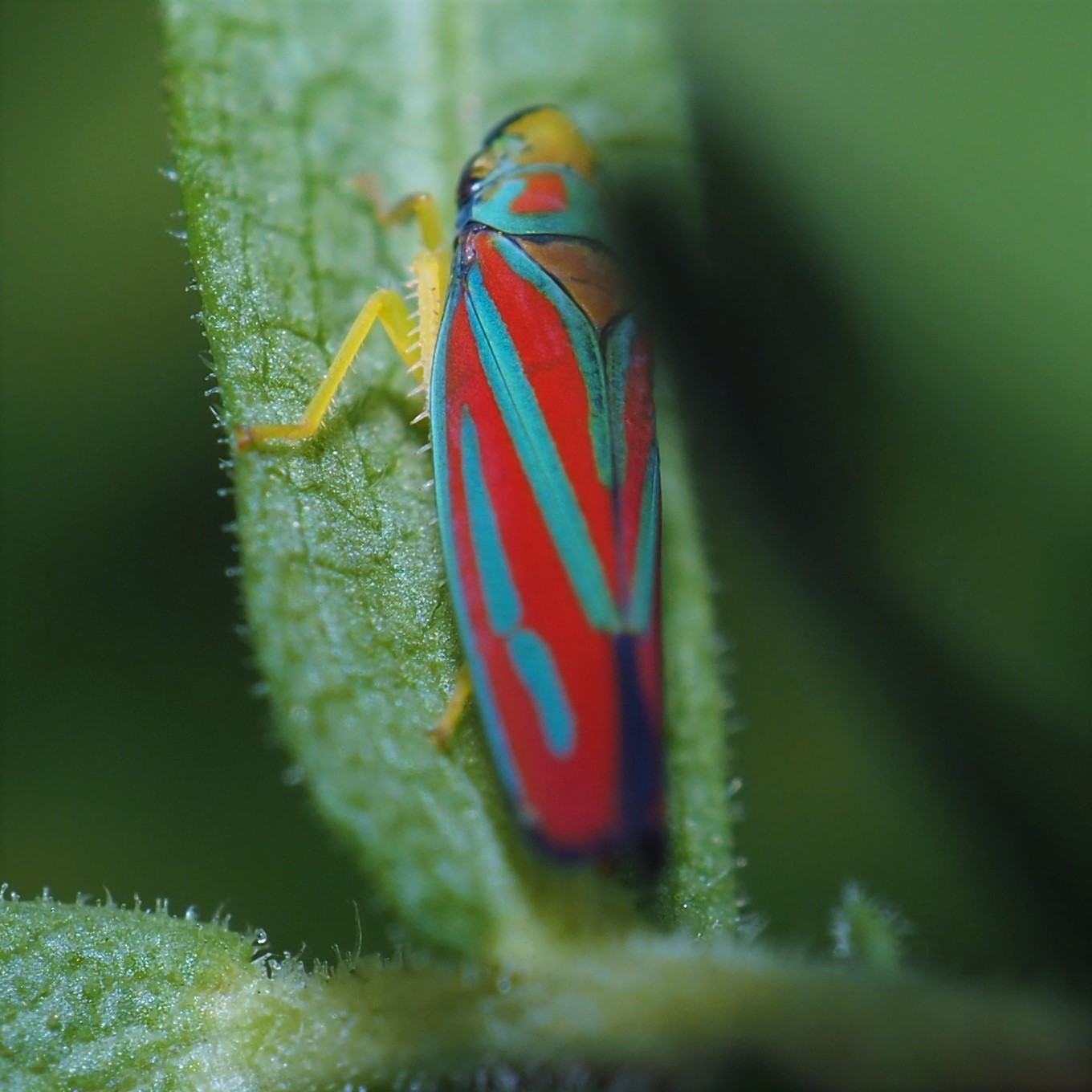

Here are a few unidentified species of Leafhopper.
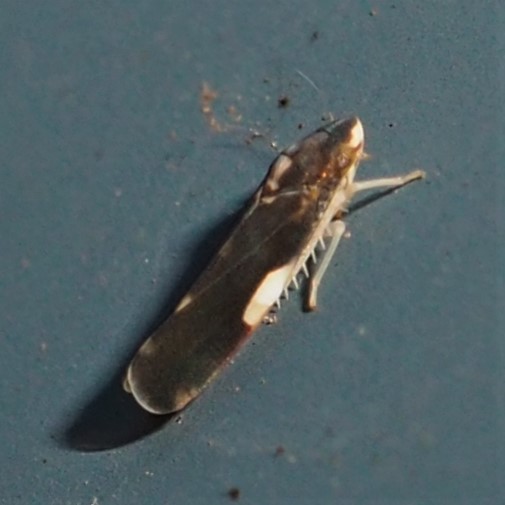
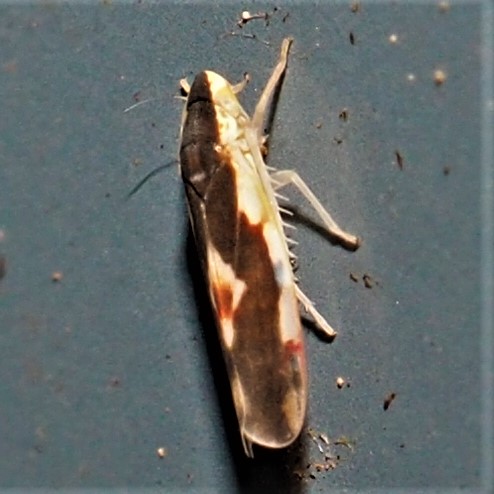
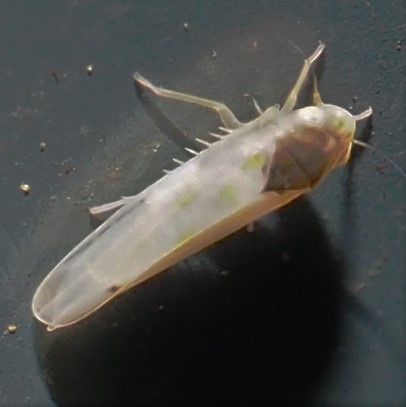
And more Leafhoppers. This is a batch from the genus Eratoneura. The different colors aren't just variations - most of them mark separate species. It reminds me of the little song about the little houses: "There's a pink one and a green one and a blue one and a purple one." Well, we have a yellow one and a red one and a brownish one.
.
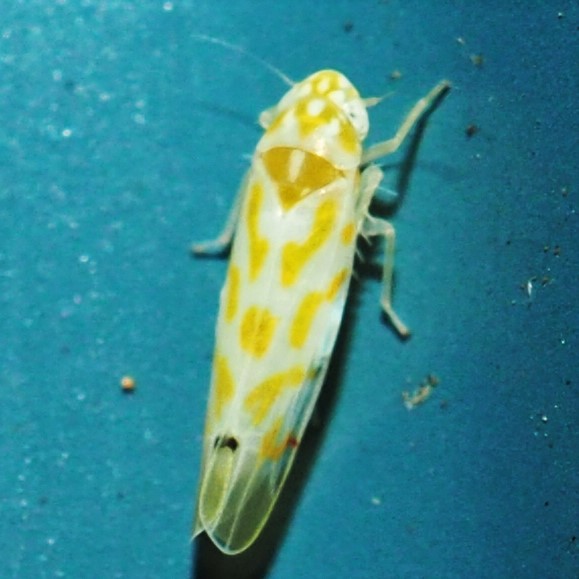
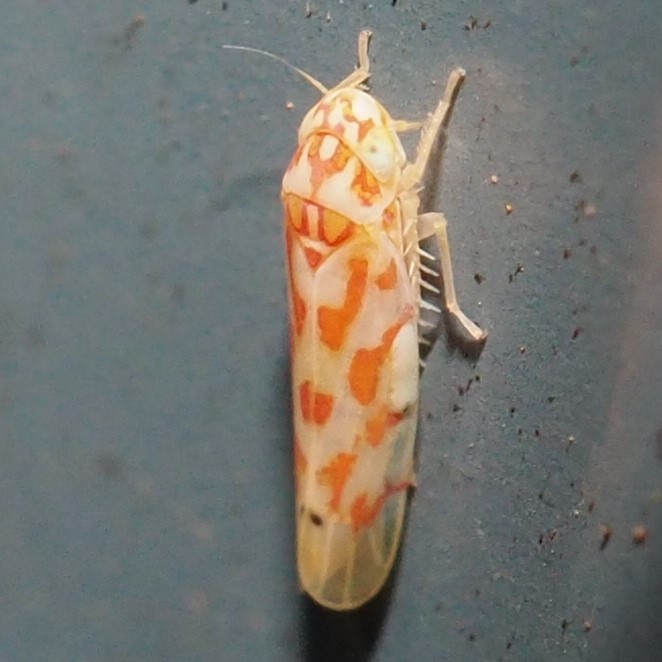
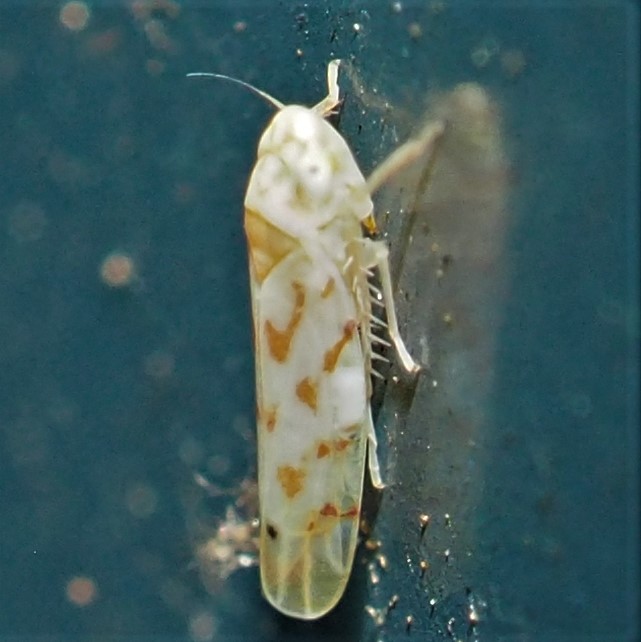
A few more Leafhoppers. The first one is Erythroneura elegans, and does it deserve its name! Next is almost 100% sure to be in genus Scaphoideus. At the tail-end of the wing is that "flower" print design. And last is the Japanese Maple Leafhopper. Its blue-green wings and sharply pointed yellow head give it away.
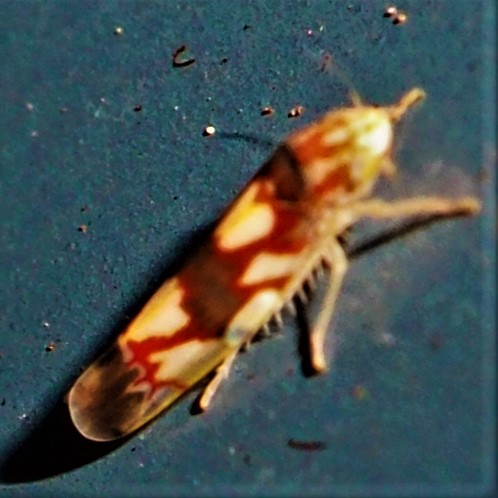
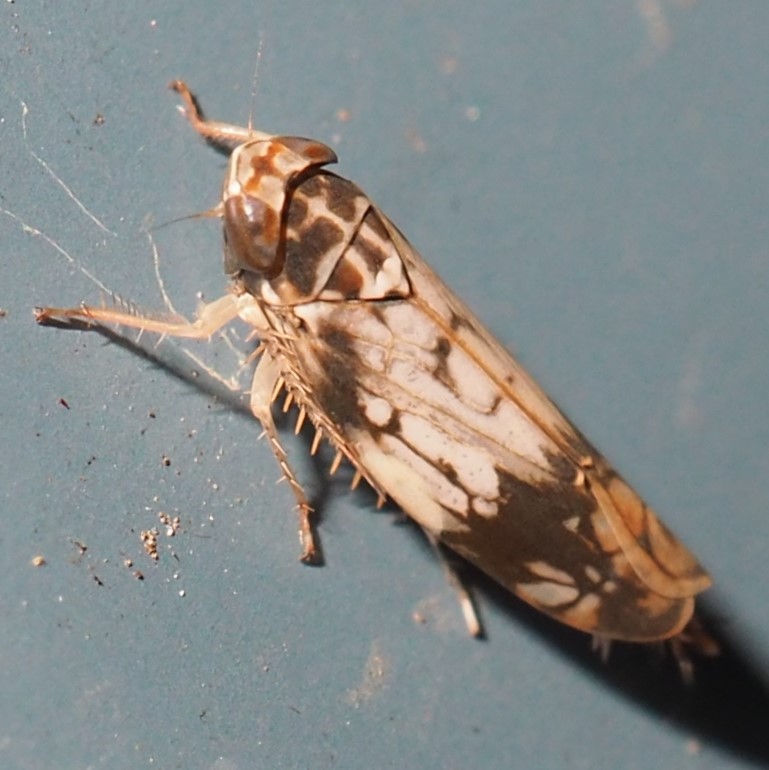

Just a few more Bugs. A Stilt Bug; a White-margined Burrowing Bug; and a Plant Bug, probably of genus Lygus. The fourth bug is a Long-necked Seed Bug.

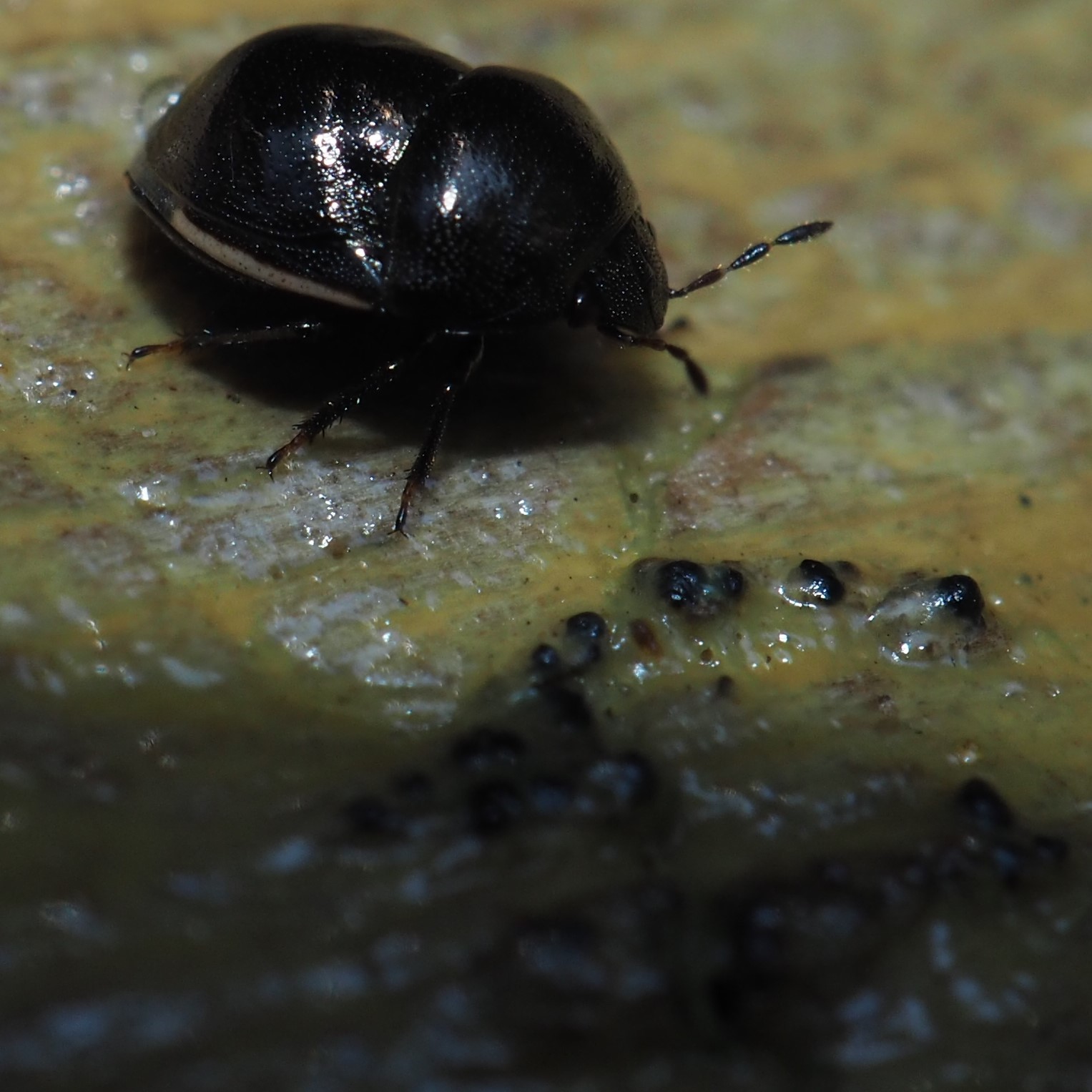

One last bug. This is the nymph of the Long-necked Seed Bug. You can see the wings aren't very long yet. We did see an adult on July 1 this year (image 2). Apparently we didn't see either nymph nor adult in 2018, but we did in 2017.

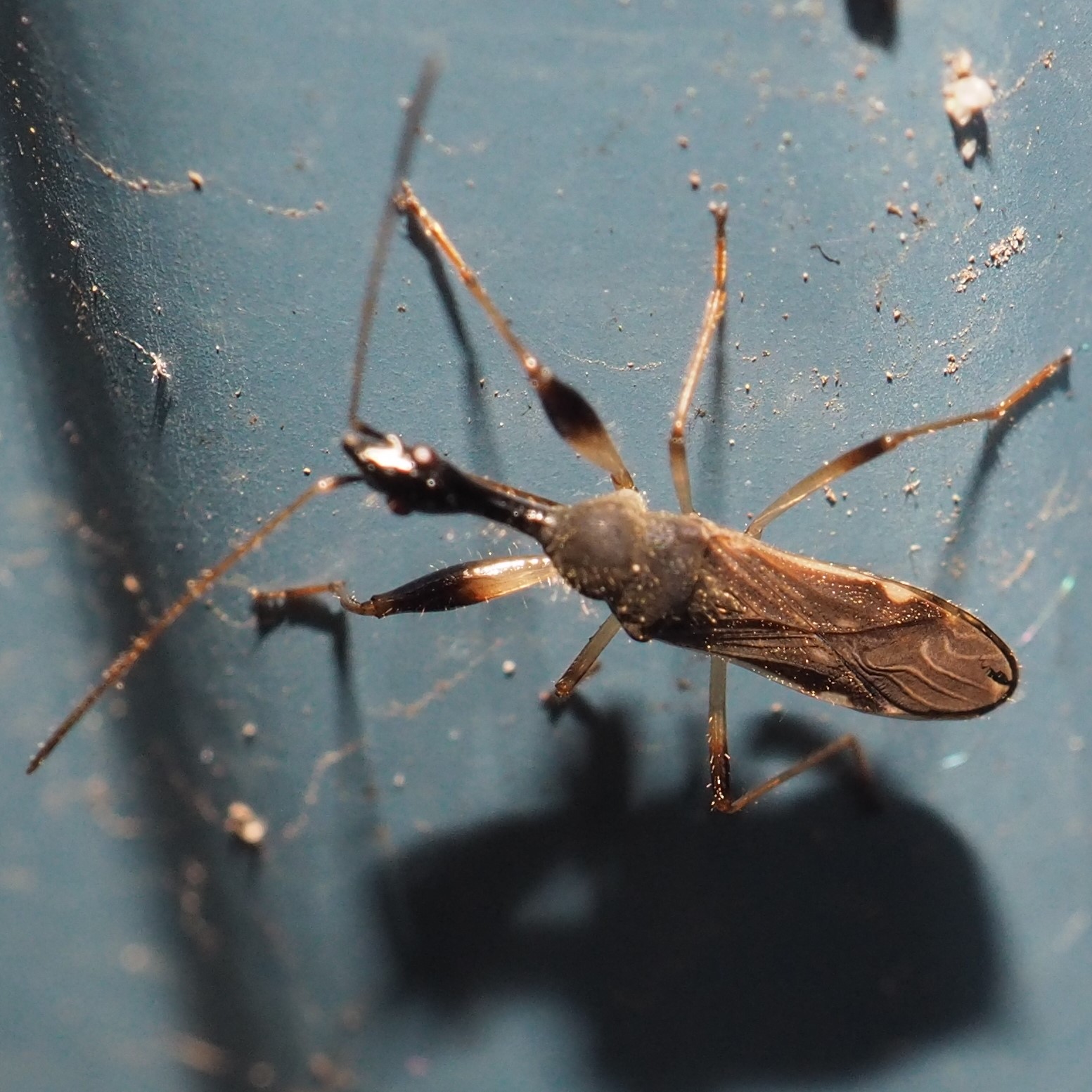
A few Butterflies could still be seen on the Asters. Here on a Purple Aster is a Painted Lady Butterfly. And on another is the little Zabulon Skipper. Third is what was identified on iNat as the Zabulon Skipper. Perhaps the difference in pattern is sexual dimorphism.
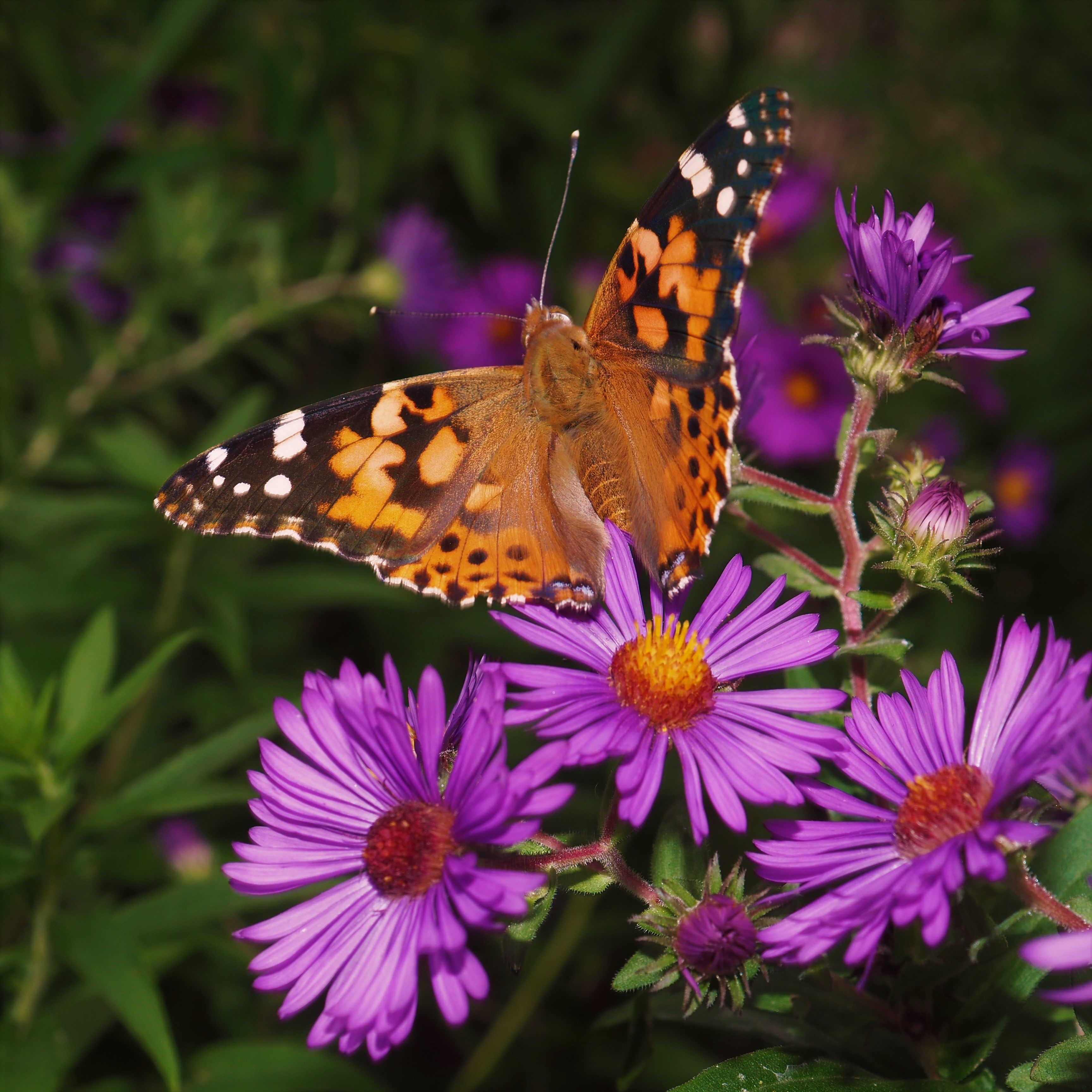


One little caterpillar - I think it is the Grey Pug Moth, Eupithecia subfuscata. It's on the same kind of Purple Aster as one from September last year! Then we have two different Mystery Moths: one from a leaf and the other from the shop siding.

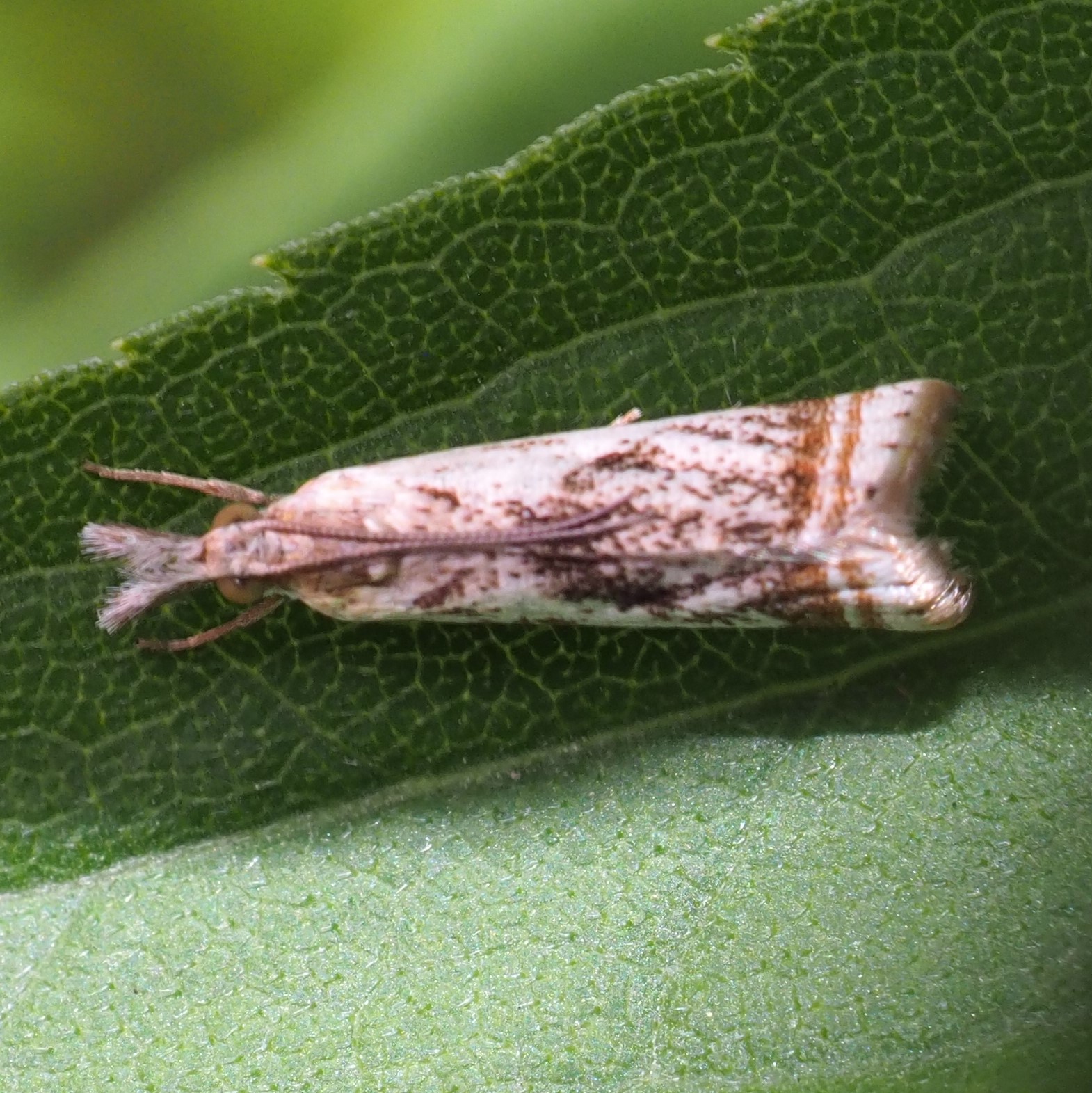

The ID app in iNat suggested just plain Jumping Bush Cricket (Hapithus saltator), and Brandon Woo seconded it. So it's a Jumping Bush Cricket!

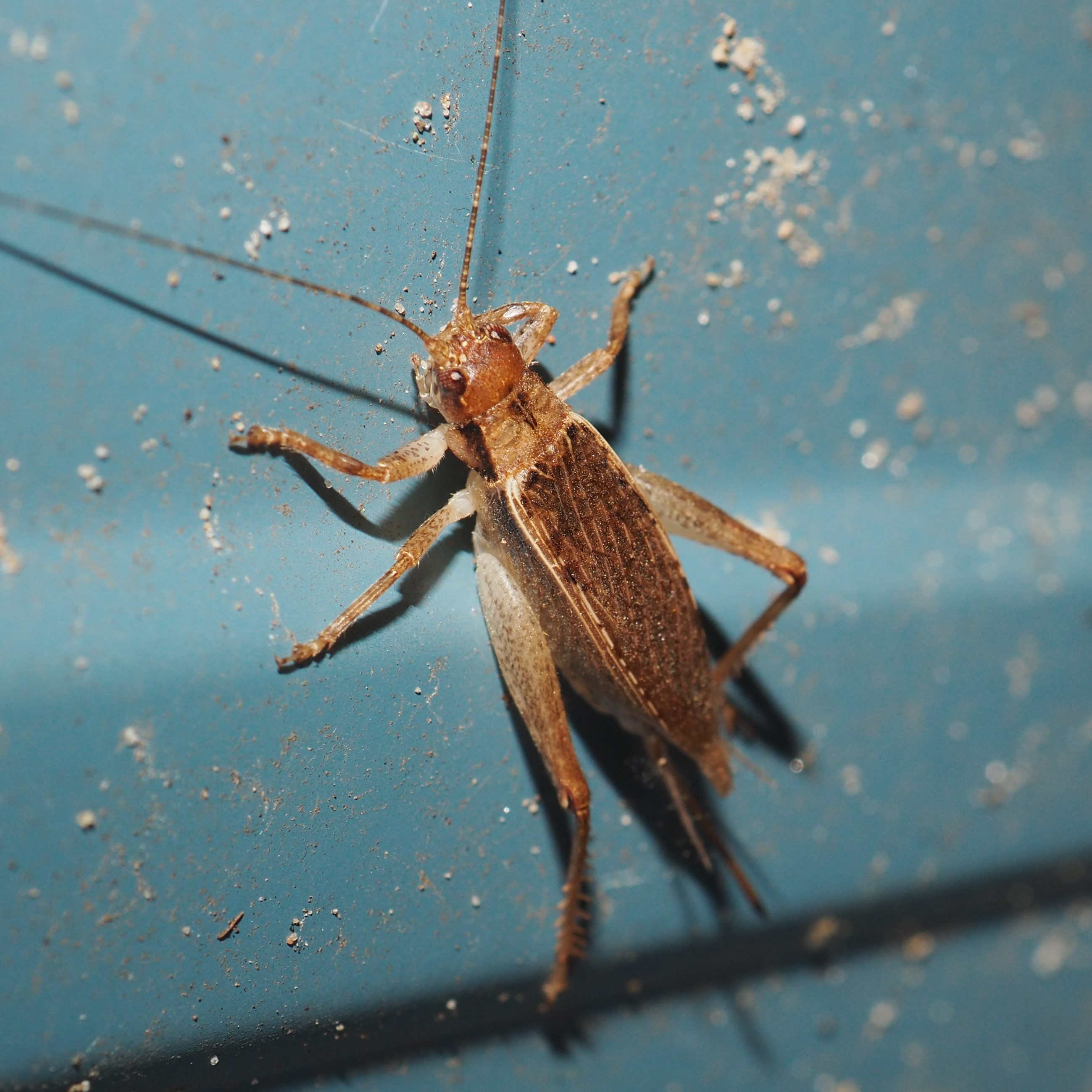
Some of the fishes. Since the outdoor temperature is starting to drop, I have to be careful about feeding them if the water temperature drops below 55 F. But for now if I call Froggy they come to see if it is the food song.
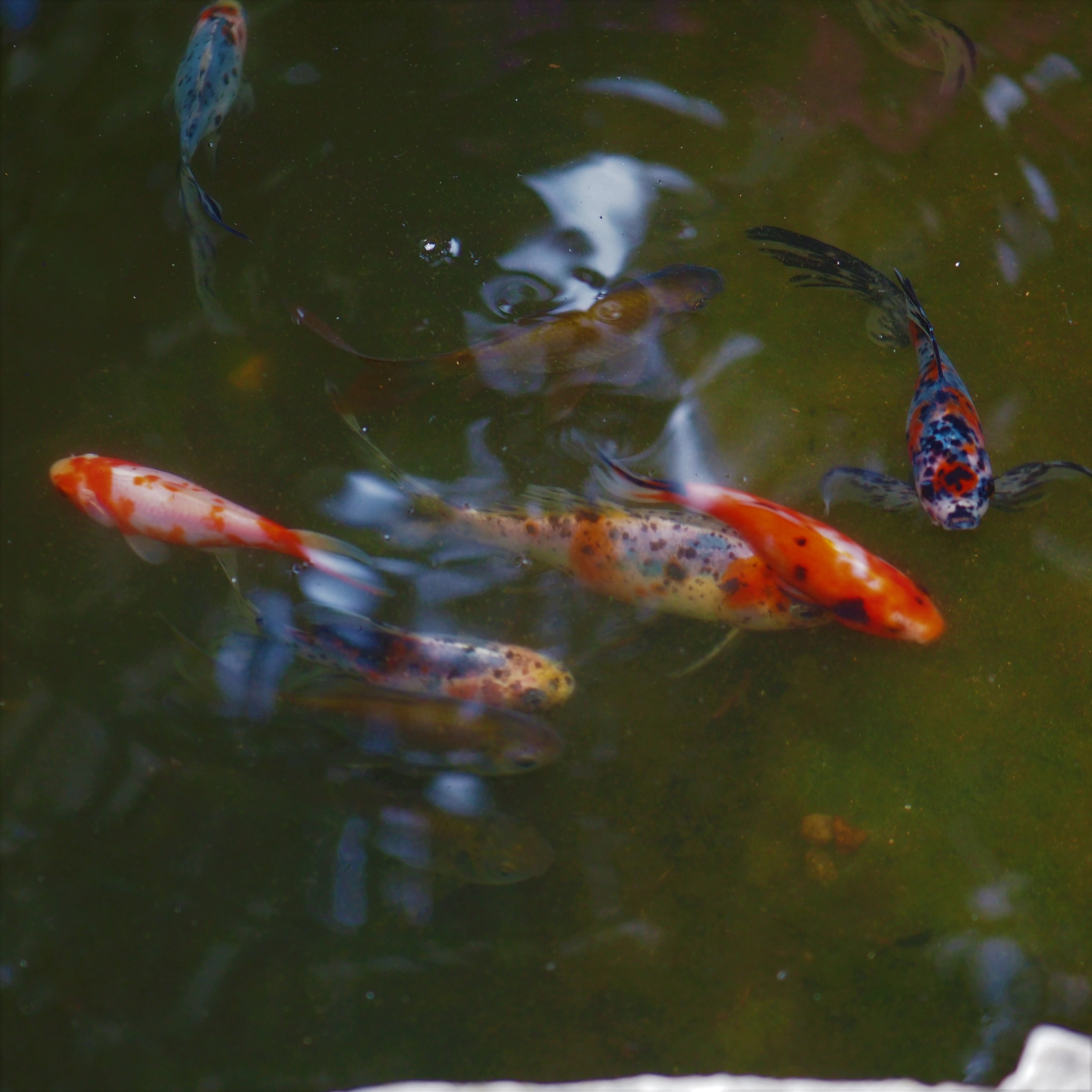


Speaking of Froggy, he is still here. The other day I got a phone call while walking around the shop perimeter, and suddenly he began to answer. Picture 3 shows both Froggy and a lily bud so he looks a little small. :-)
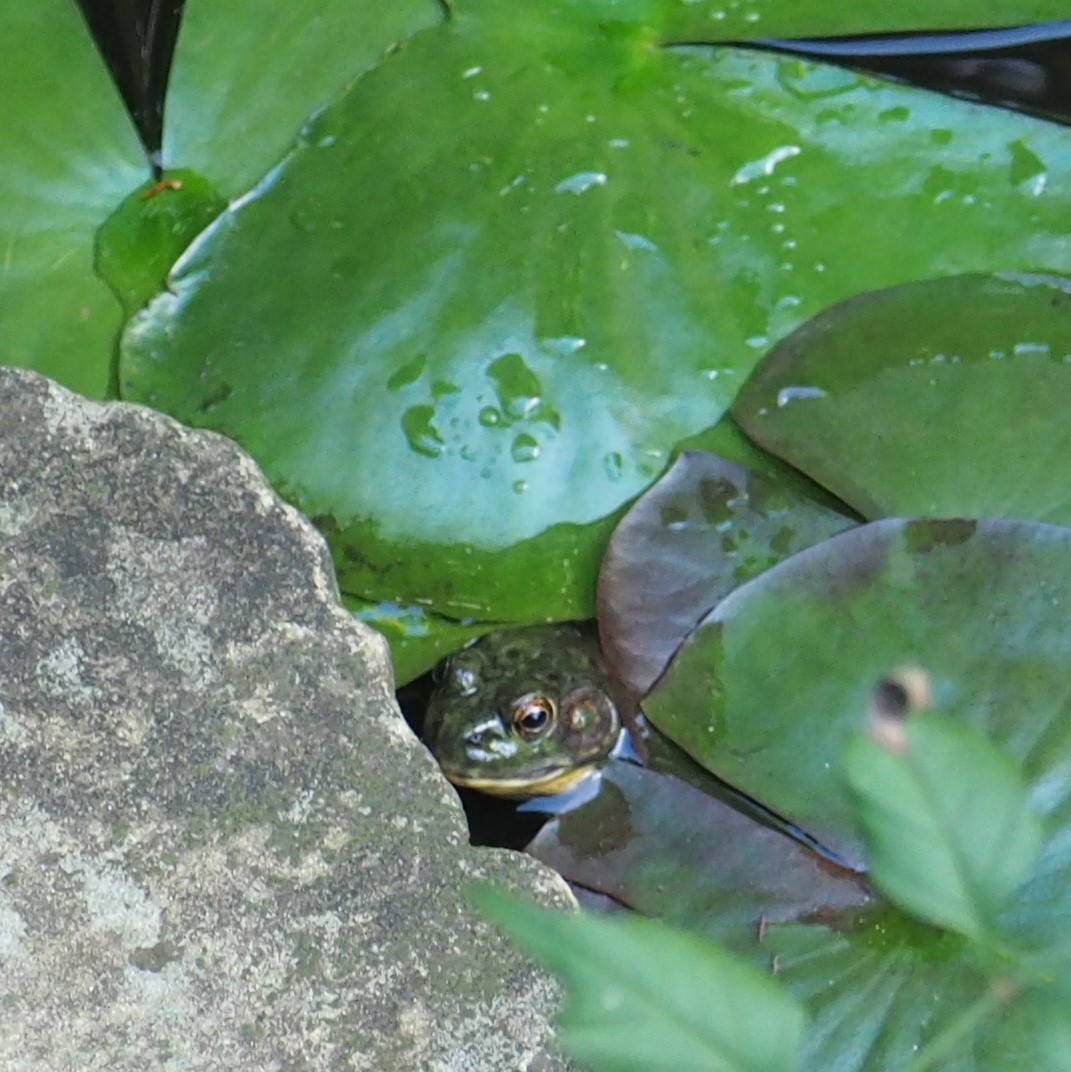


Here come the flies! There were lots of tiny Crane Flies and Gall Midges. Picture 3 shows a possible Crane Fly (but what a strange head it has). Mobbini of iNat noticed a tiny little aphid at the lower right. Can you see it?

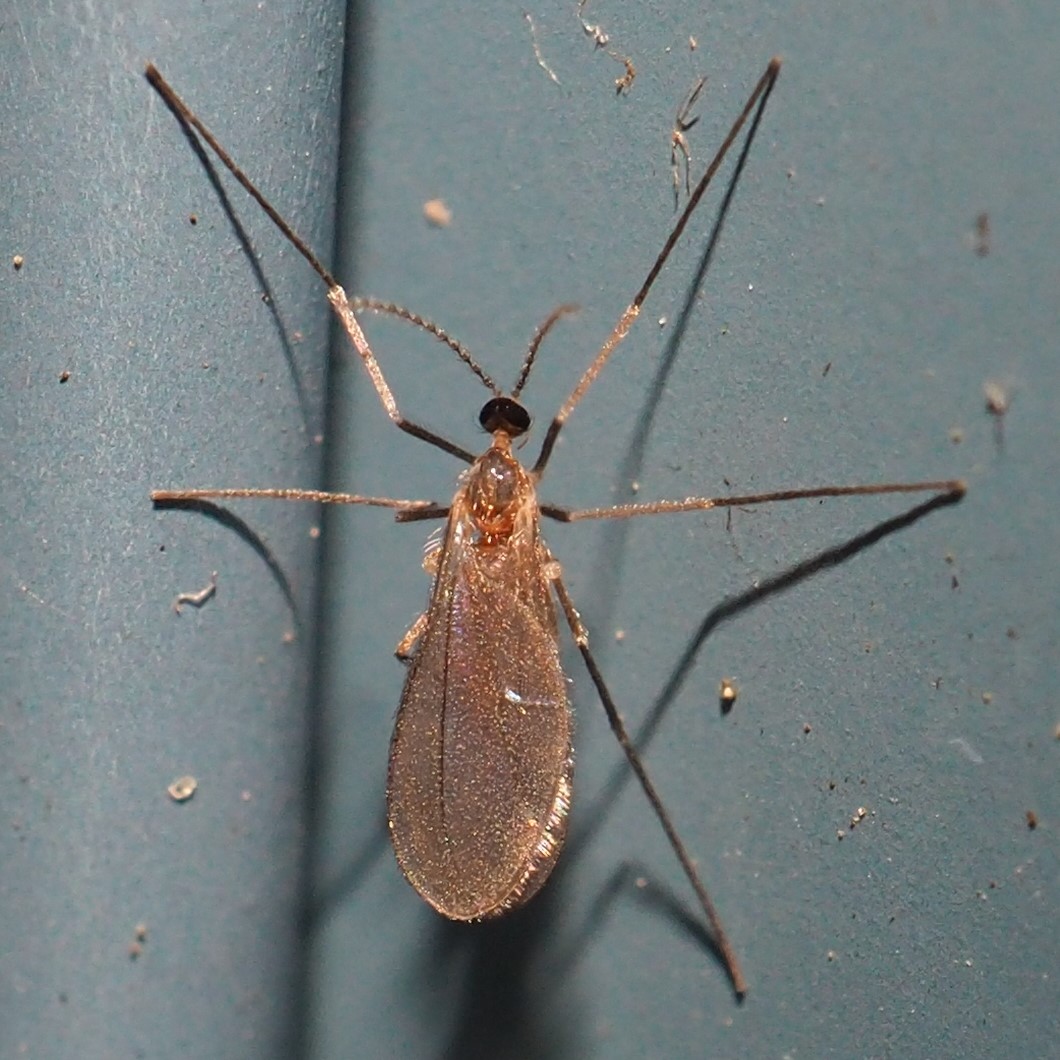

The tiny white daisies (a species of American Daisy) are out again, even stronger than last year. The Hover Flies love those teensy flowers. They must have a special kind of perfume.. First and second, a sturdy Hover Fly, probably a relative of the Eupeodes genus. Third is Allograpta obliqua. We don't see it often, but fall is prime Obliqua time.



Here is our Oblique friend again, on the Purple Aster. Second is our OOOLD friend, Toxomerus geminatus, on a Japanese Anemone bloom. I'm sorry this picture is a bit out-of-focus.


This fly with iridescent eyes came to visit the shop wall. Wow. It is probably of genus Sargus.

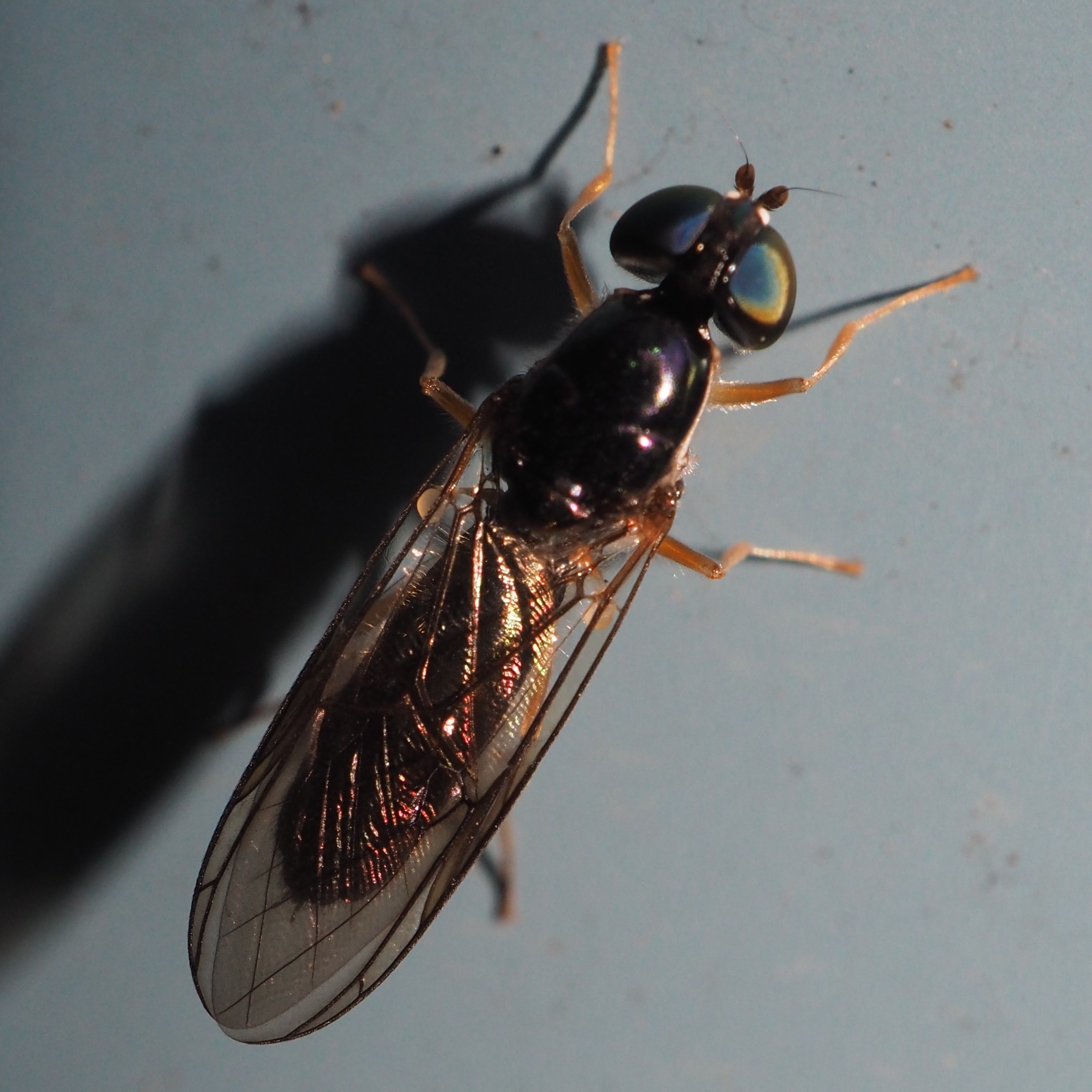

Mosquitoes were everywhere (outdoors at least). Numbers 1 and 2 are the same species. All of these love humans, oh my they do.
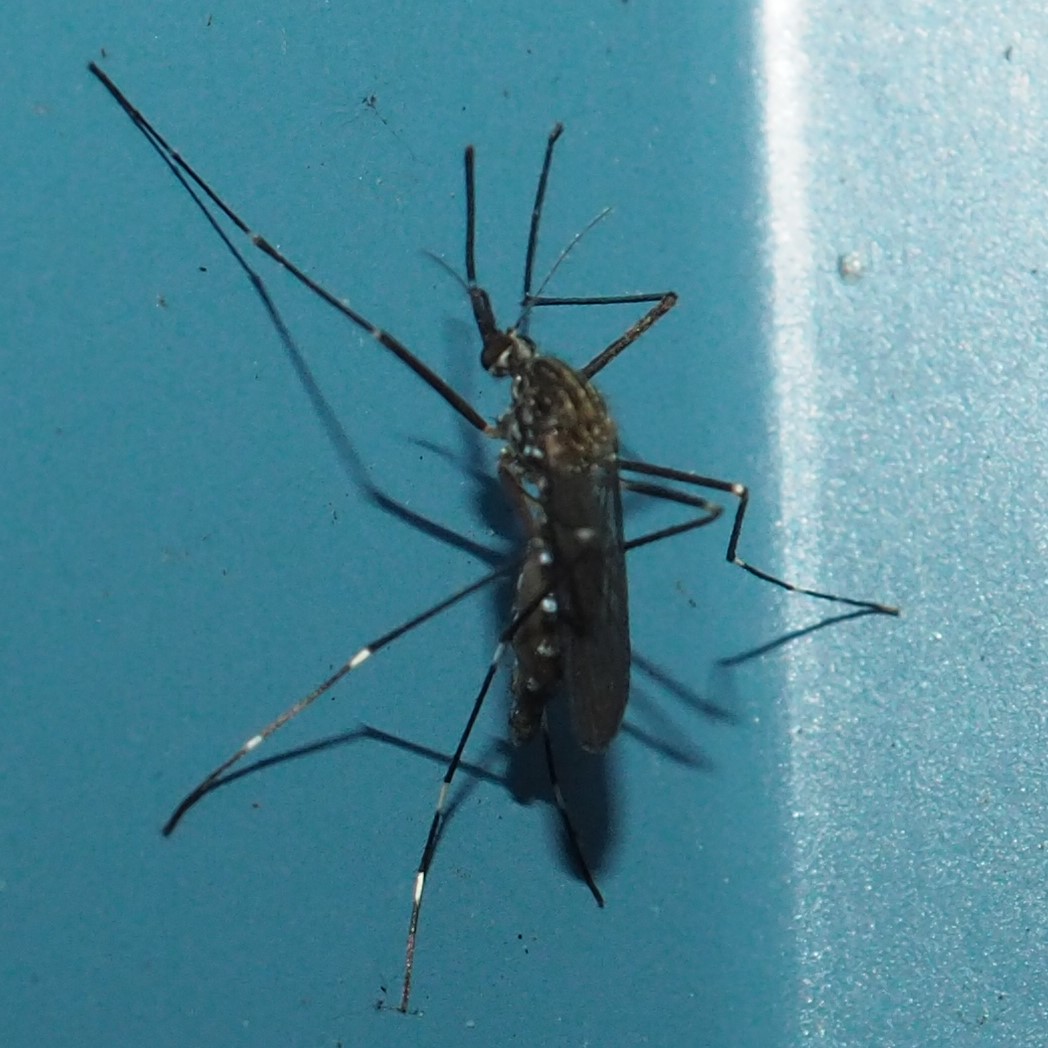


Here are two different kinds of Moth Flies. And a mystery. What's wrong with this picture? To me it seems to have 8 legs, making it a ..... spider, right? But it also looks to me as if it has two wings. So it's a ...... fly, right? What am I missing?
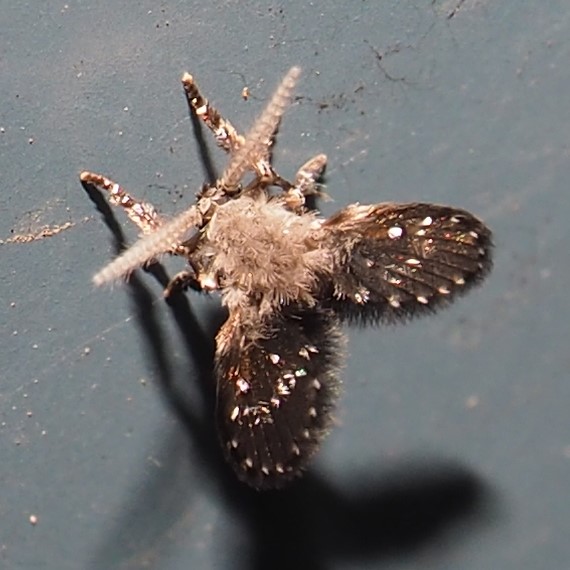

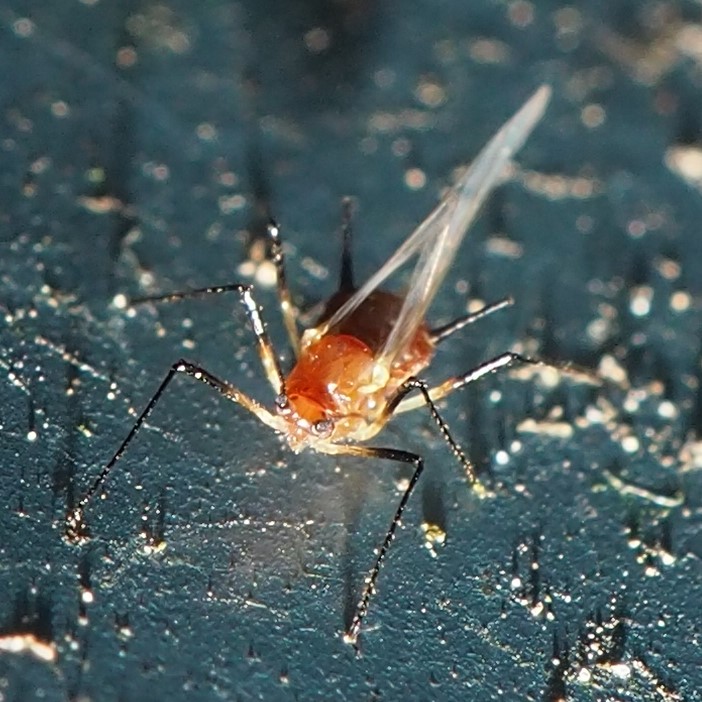
I don't know what this mystery Fly is. The second one looks like a housefly, and so does the last one (a Root Maggot Fly). Flies that look basically like these ordinary flies are called Muscids.
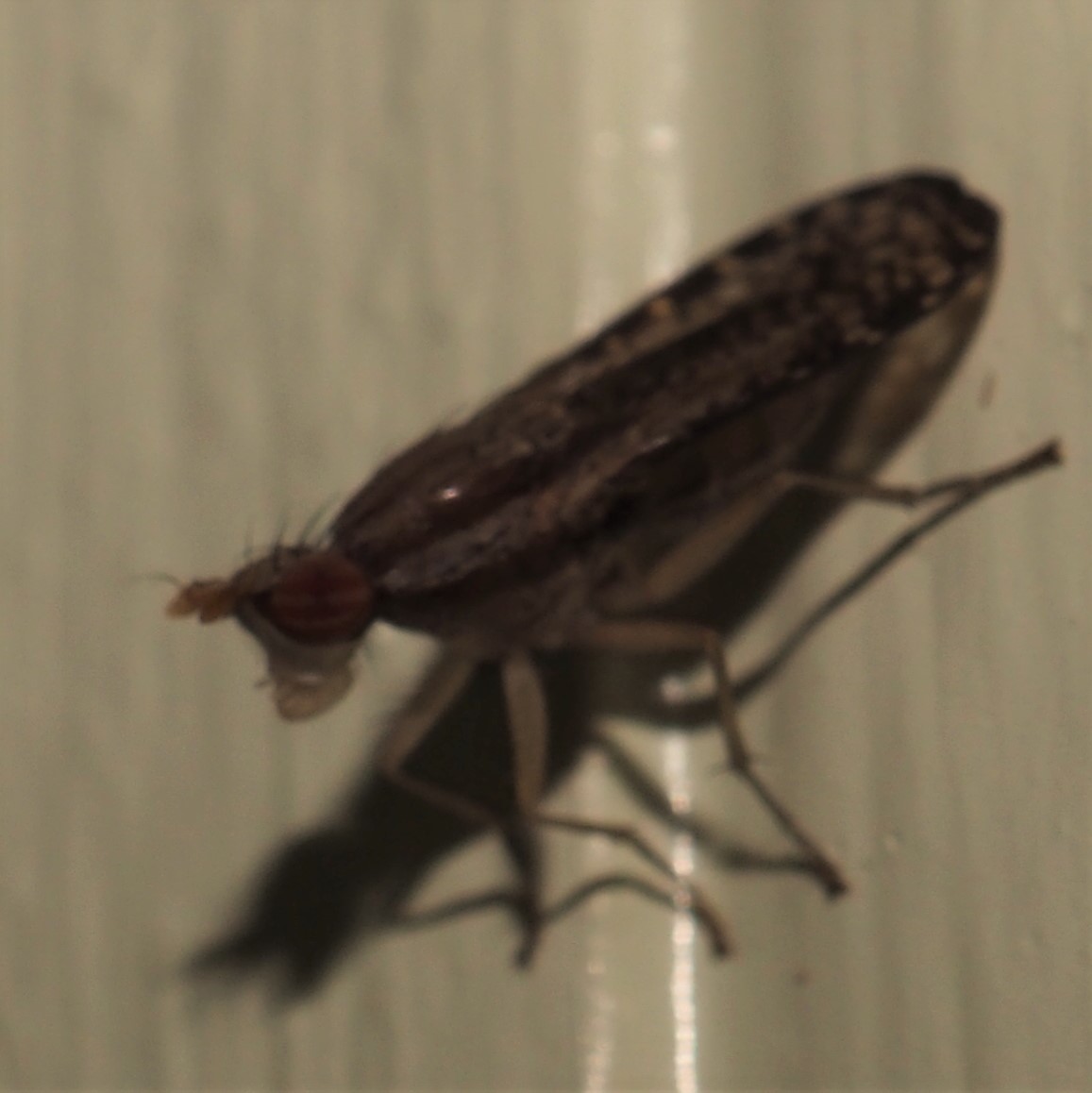
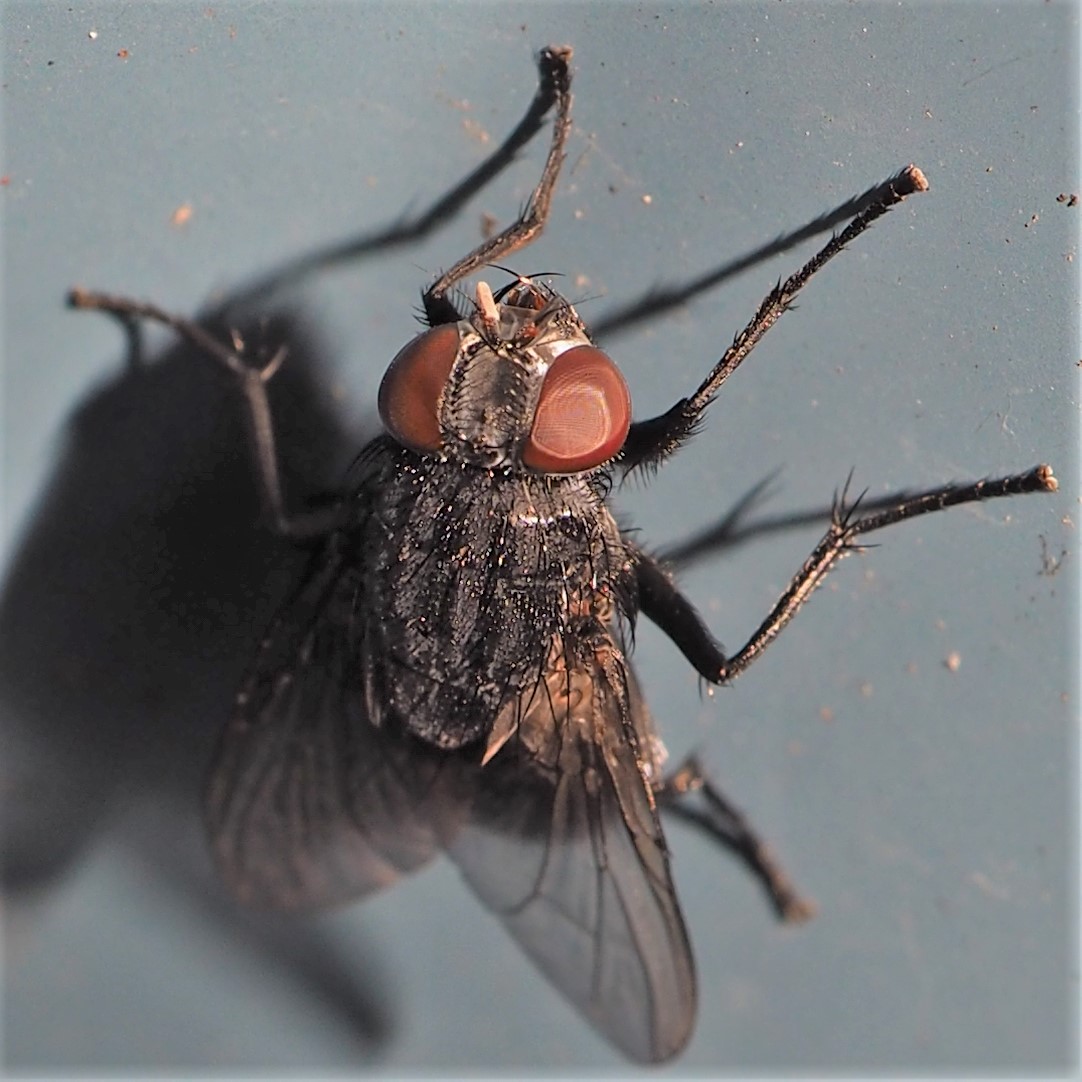

These pictures are more Mysteries. The first seems to be a bug made of foam hiding in the Goldenrod. Second looks like a round creature with long antennae. Third may be a kind of egg mass, but I'm not so sure about that.



That Common House Spider is a great wrestler. It can subdue a lunch many times bigger than itself. Here are some with a: a Beetle; b: a Pillbug, and c: an unknown object.
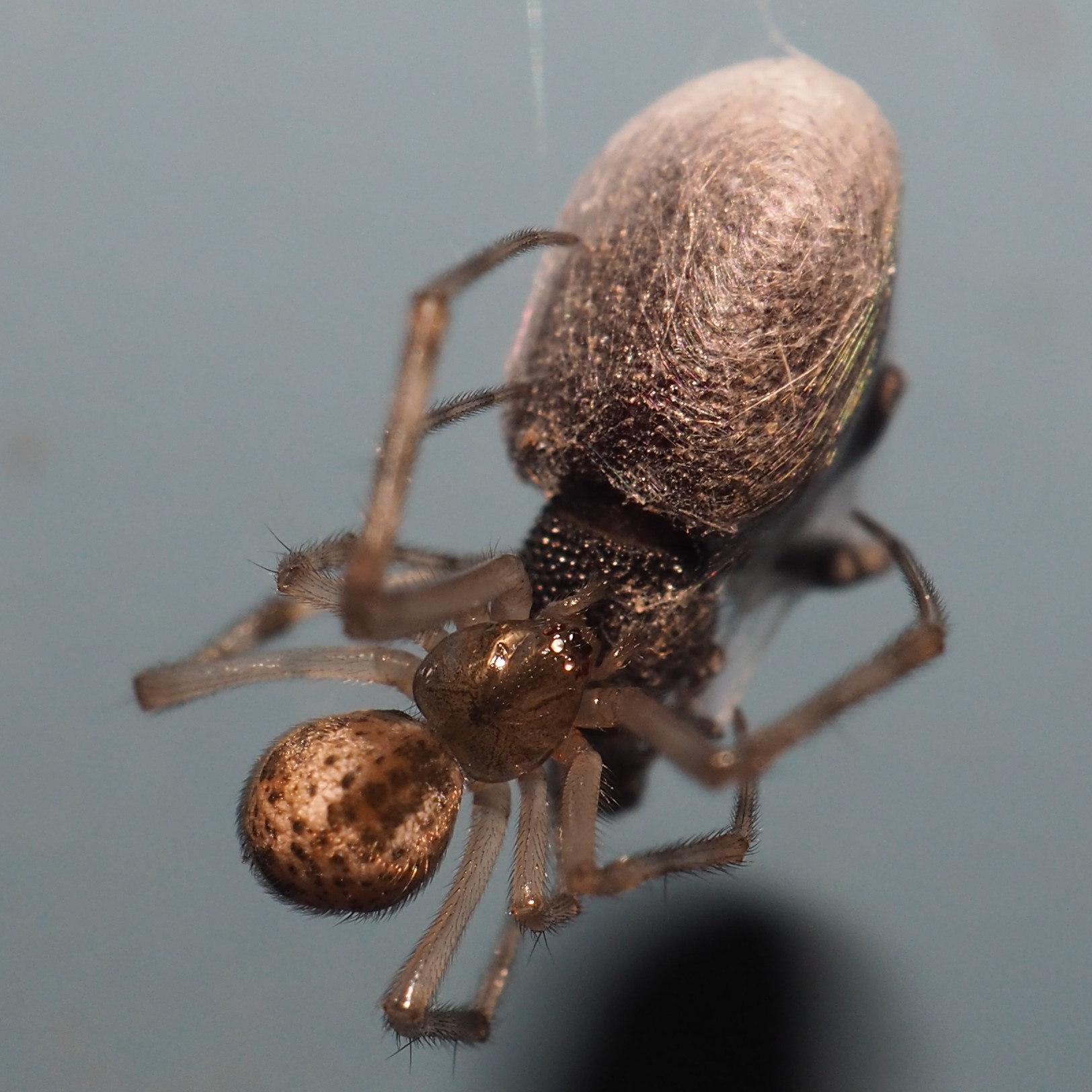
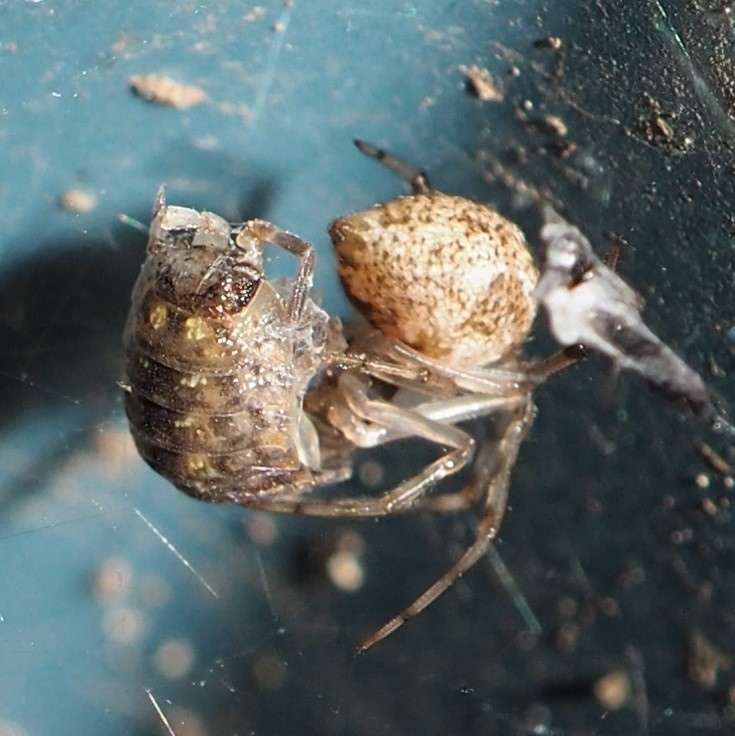

Here we have a Cobweb Spider; a Cellar Spider; and a Grass Spider.
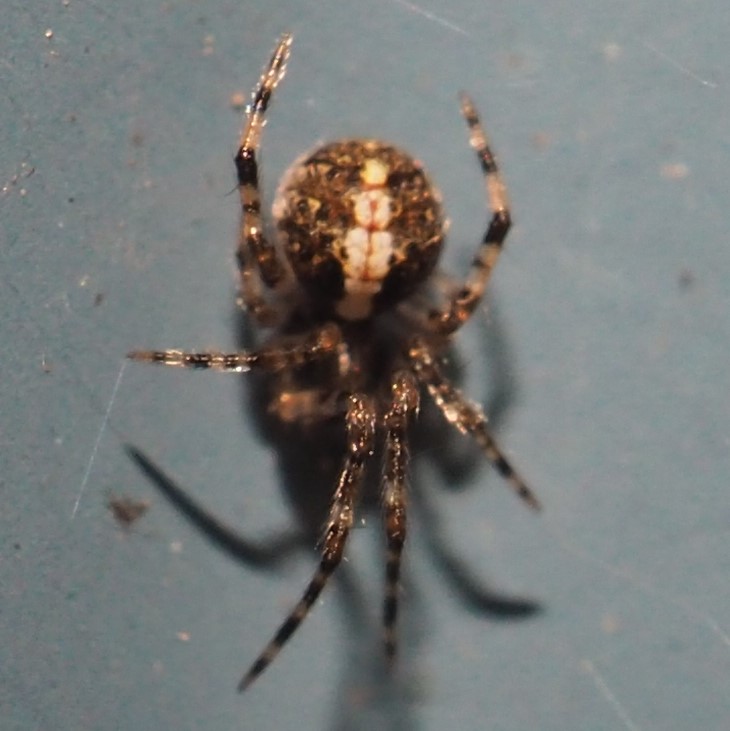
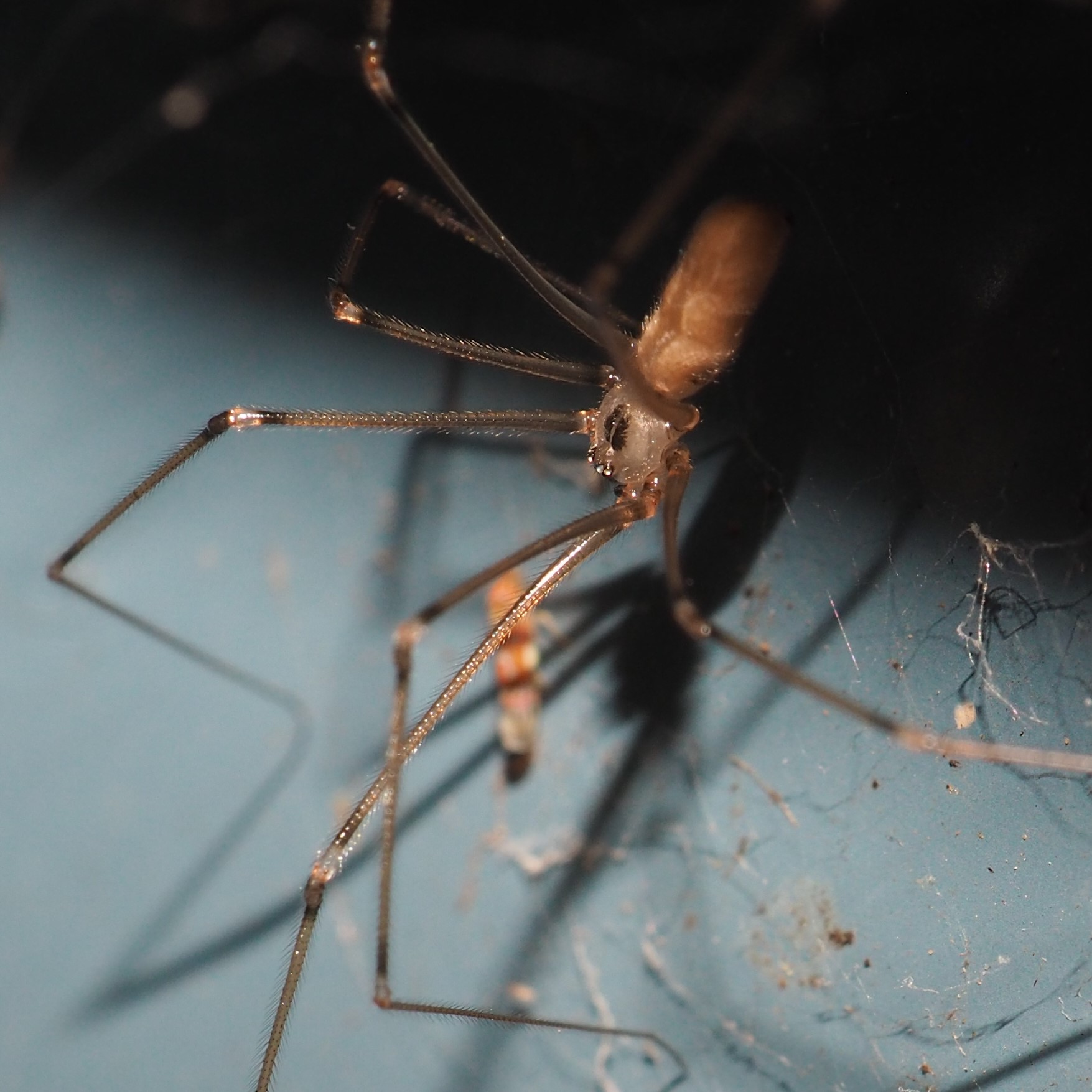
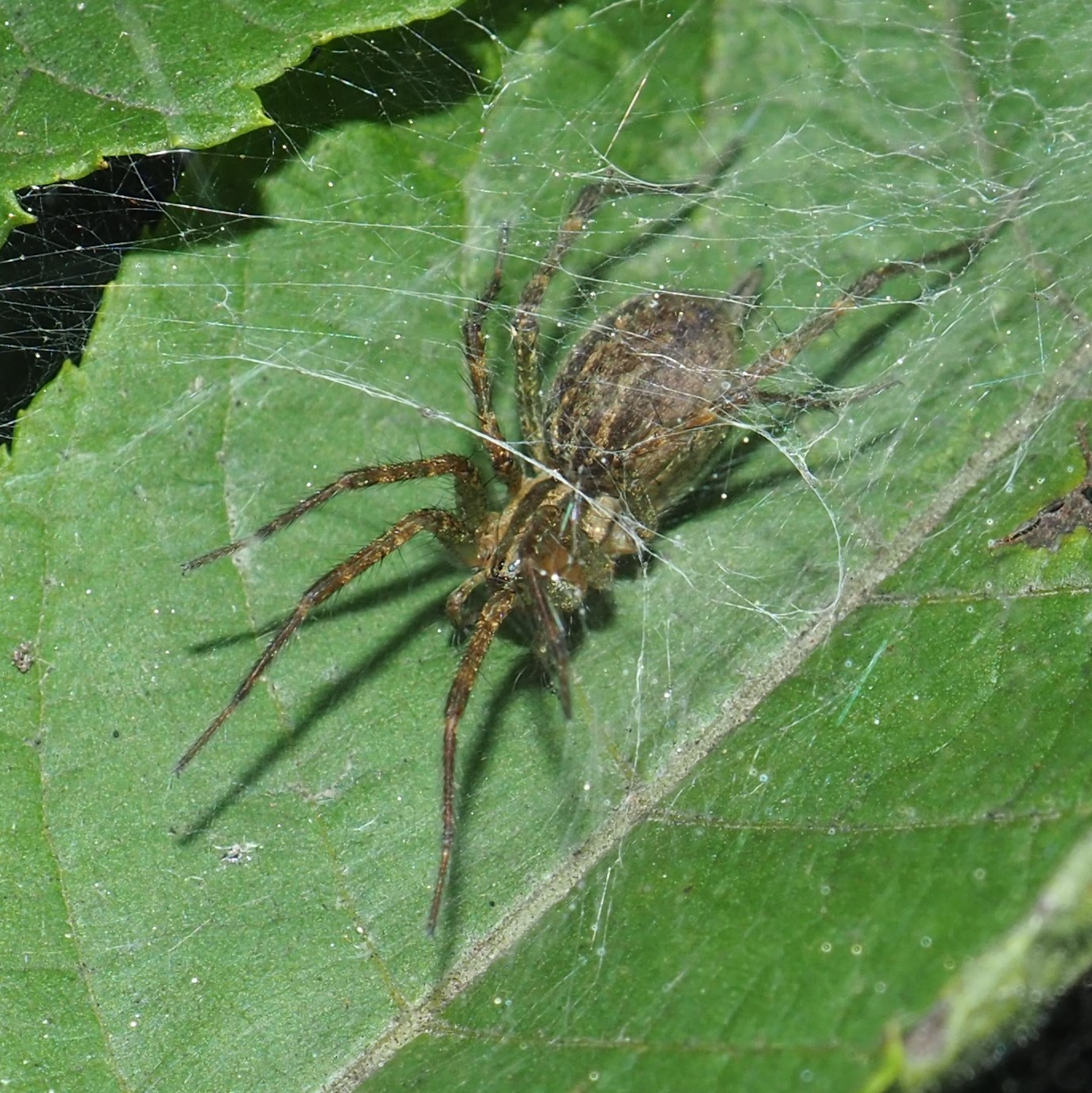
Here are some pictures taken in the dark of night with a hand-held constant flashlight. First is a Ghost Spider. Second (and third) are unknown.
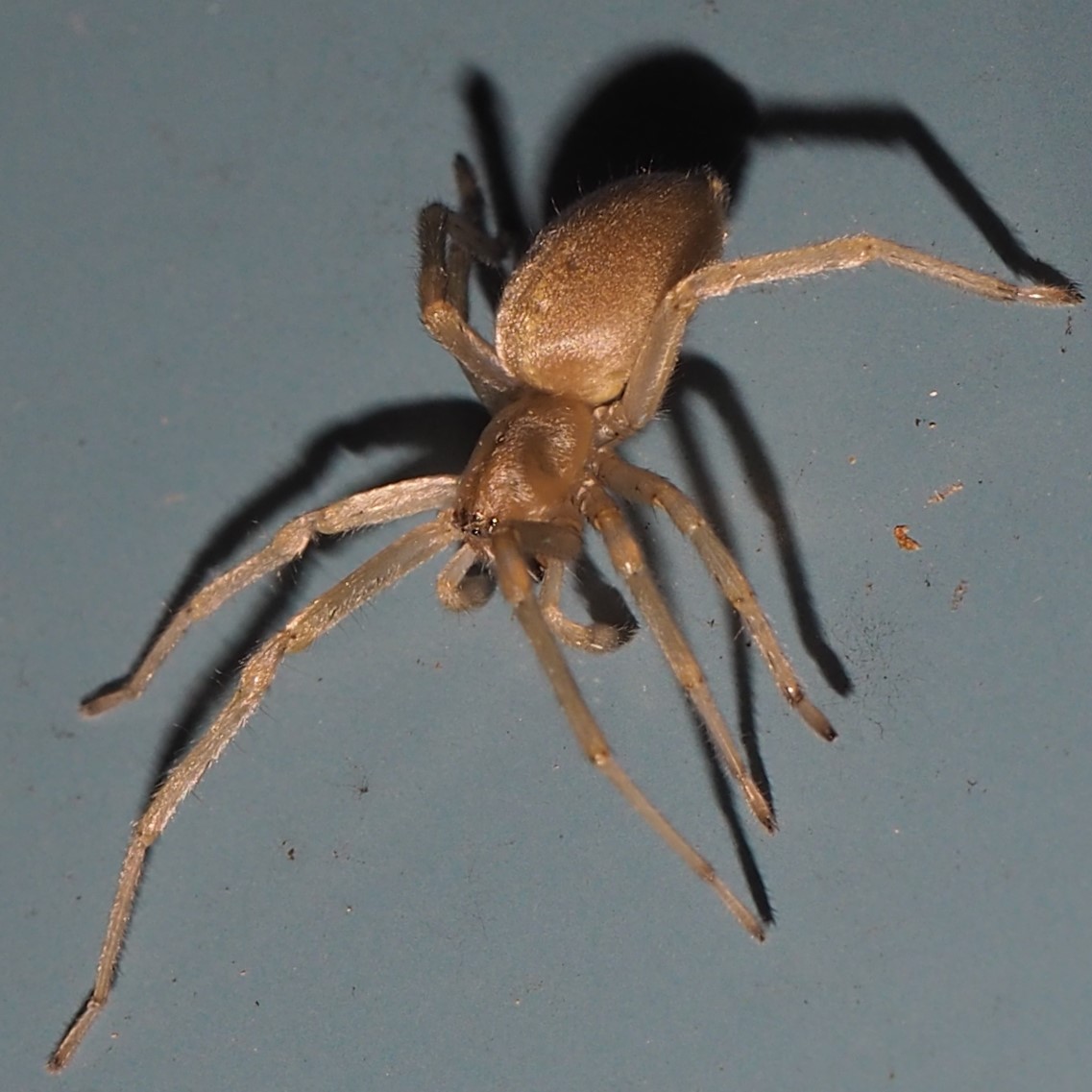
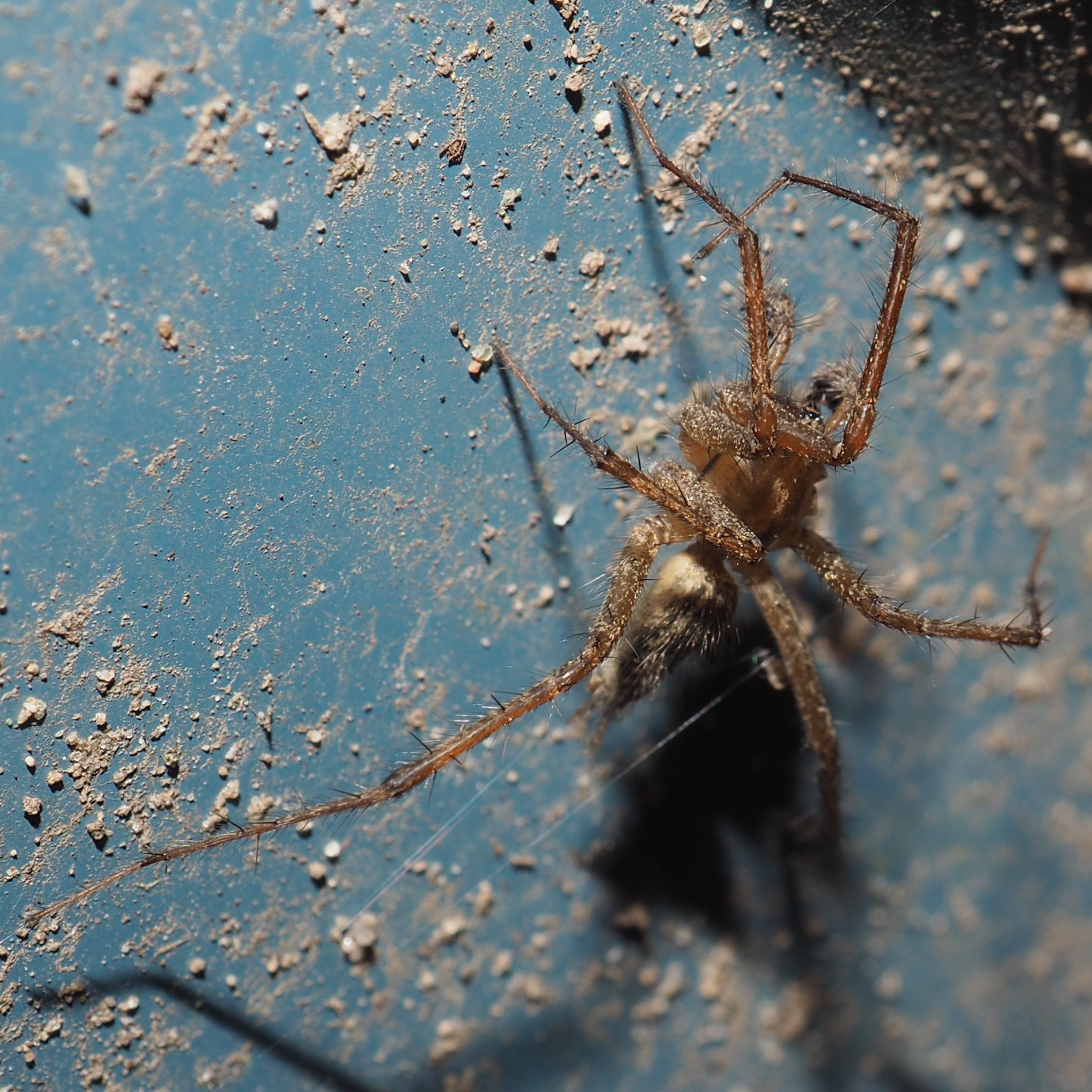
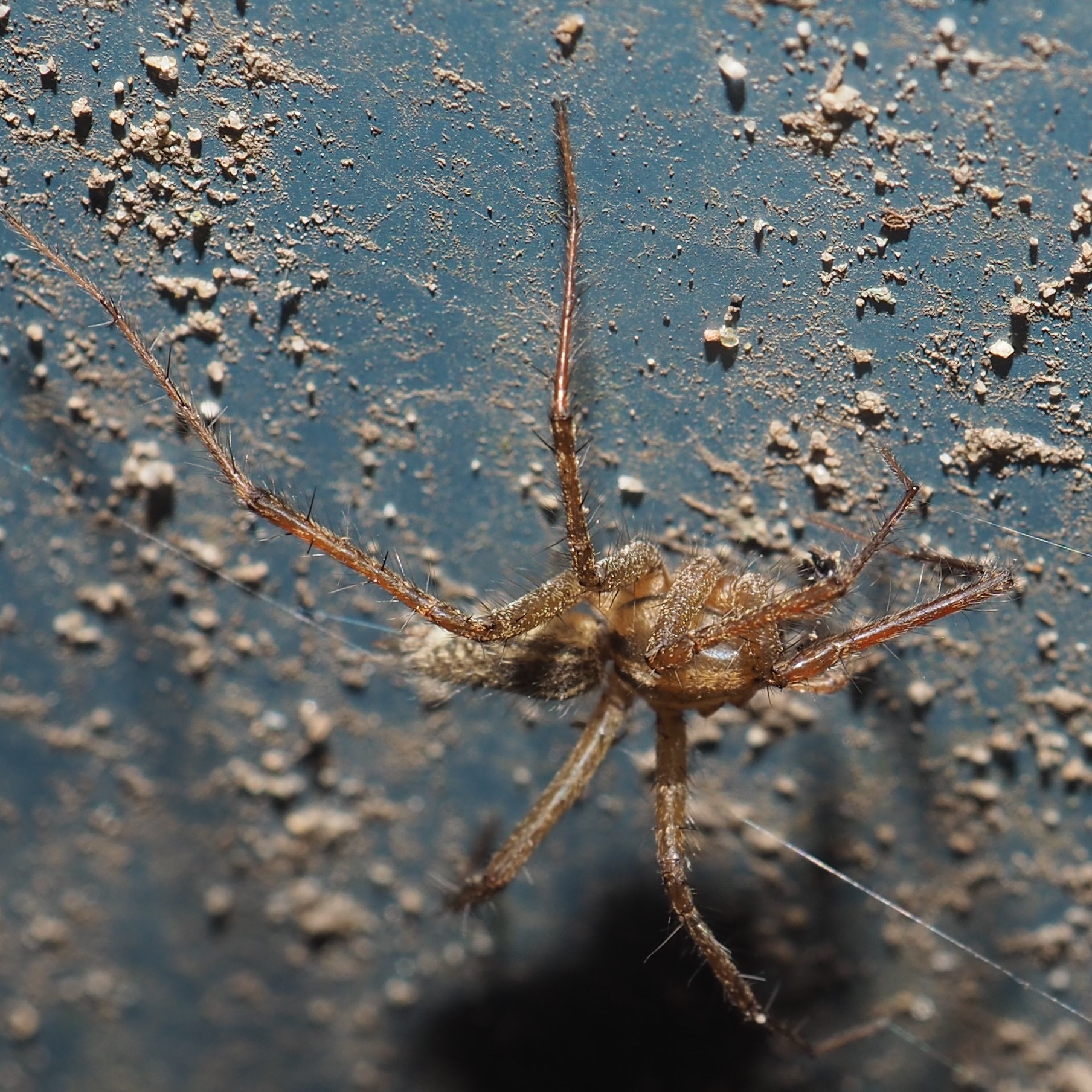
Here is our only Jumping Spider of the week. Third is a Long-jawed Orbweaver.
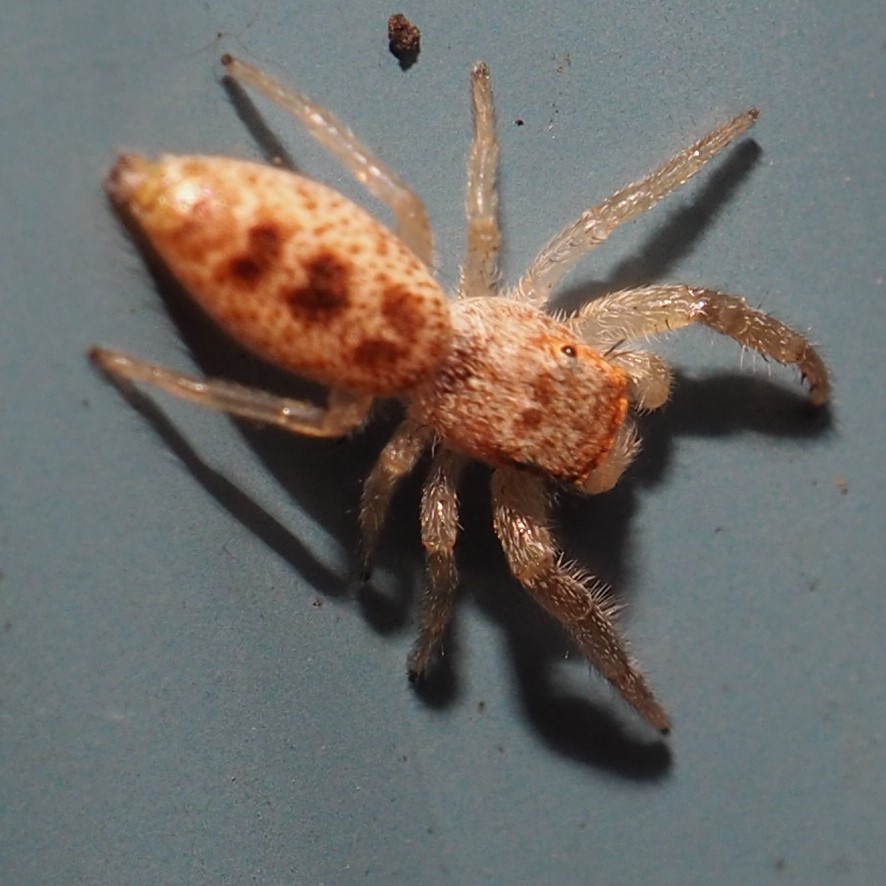
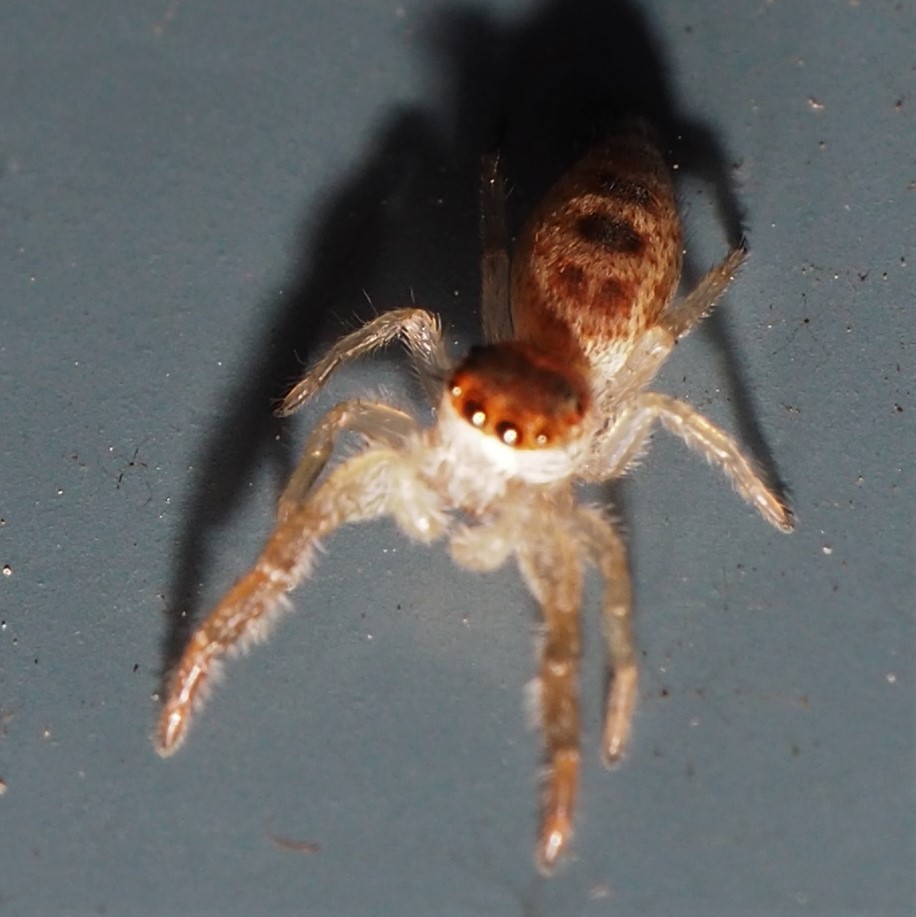

The Crab Spiders are widespread. They too love the Asters. I think all the ones you are going to see here are of genus Mecaphesa. Maybe Matt or Rebecca will tell me otherwise!
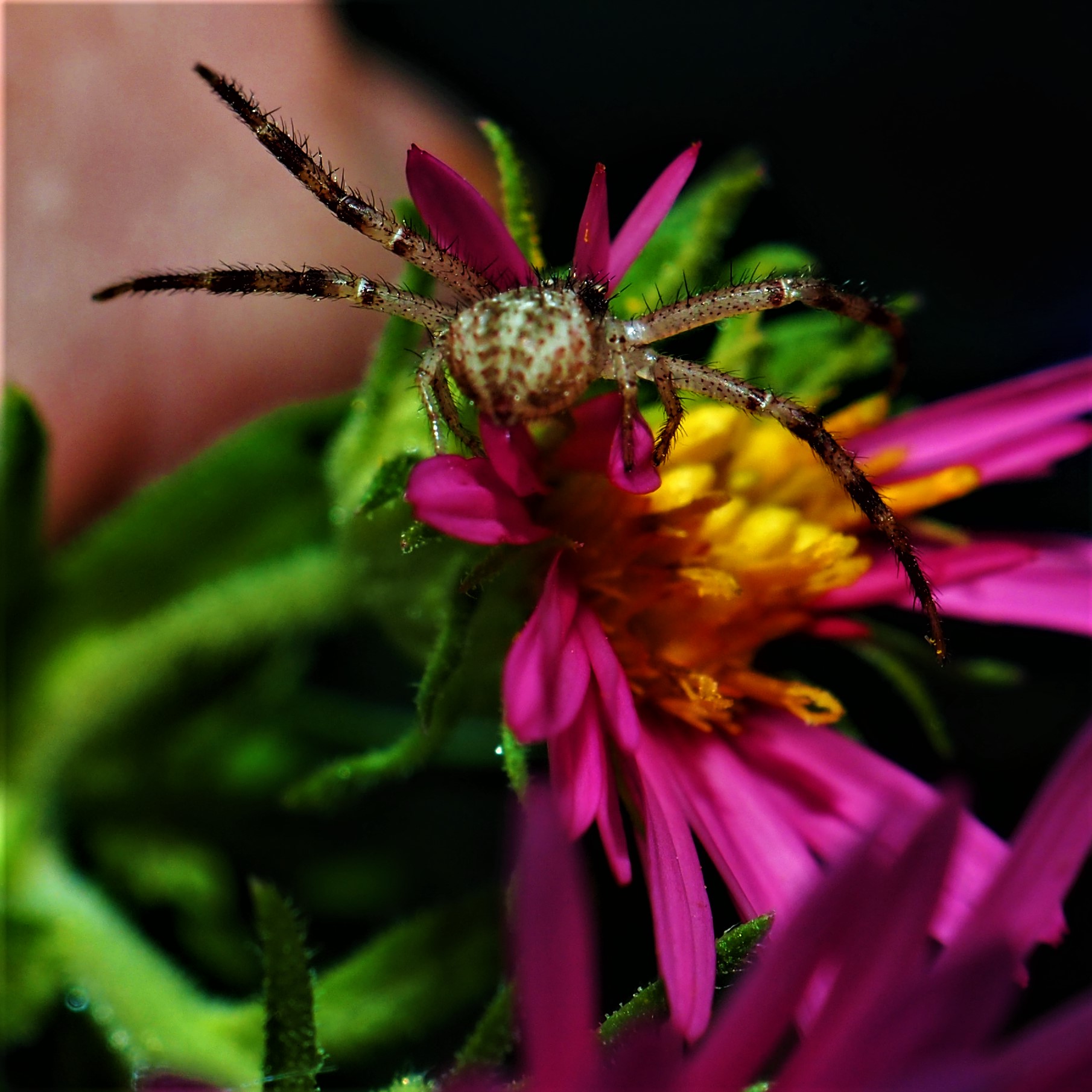
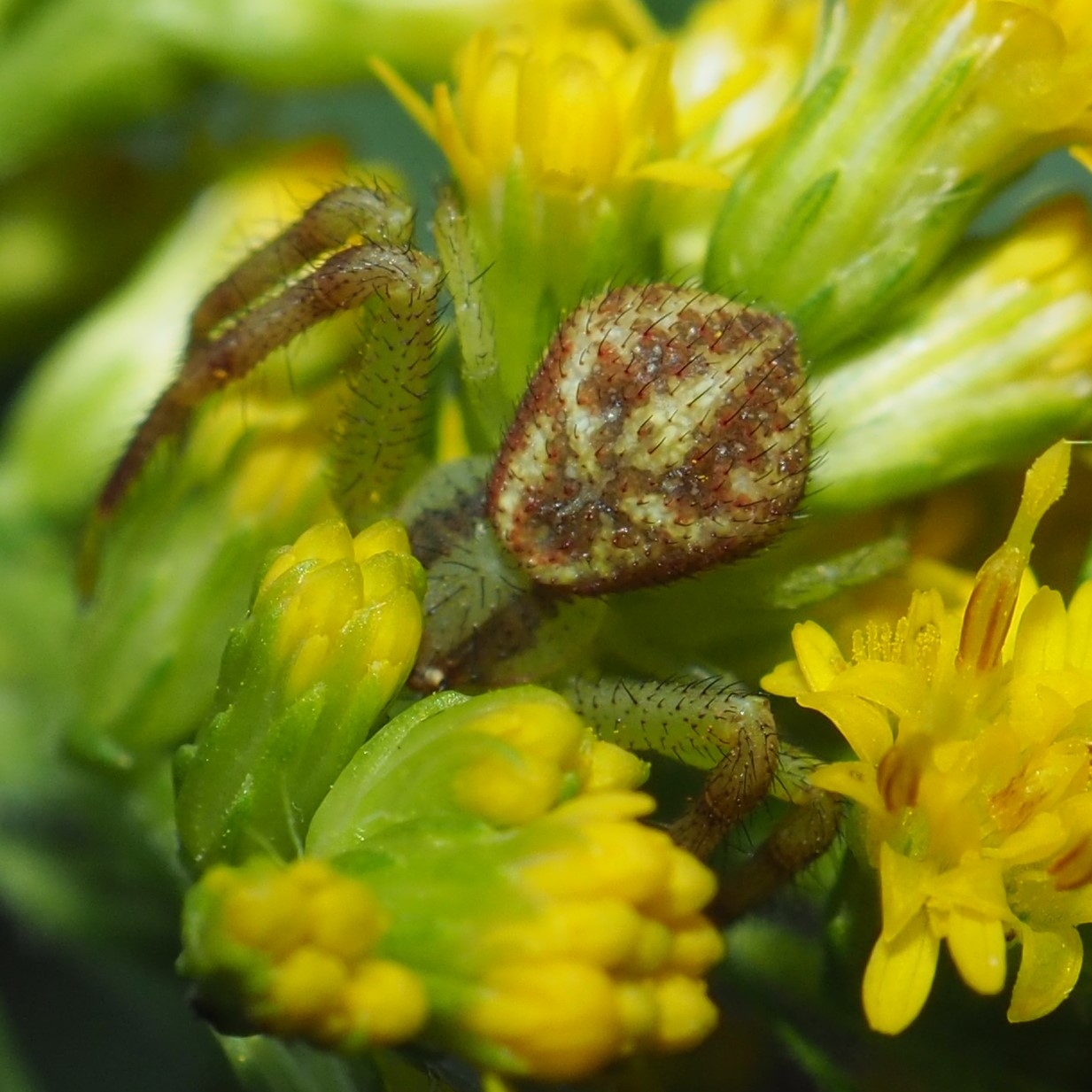
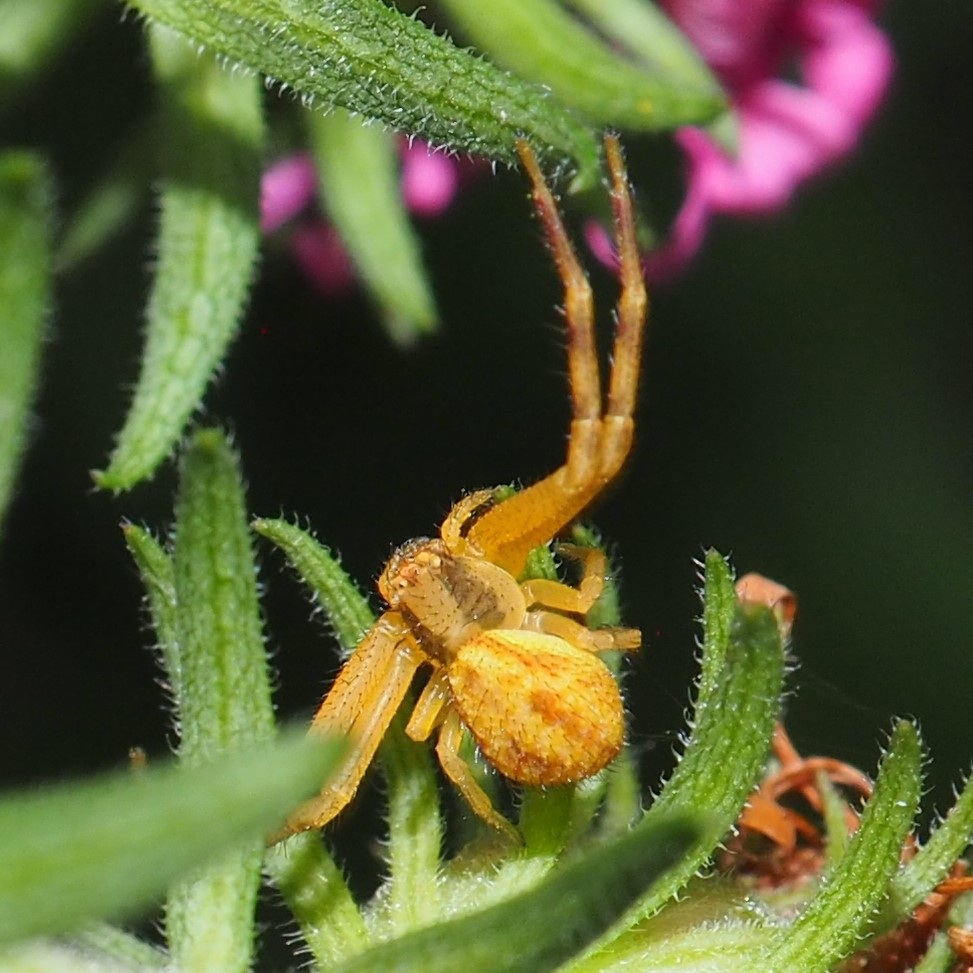
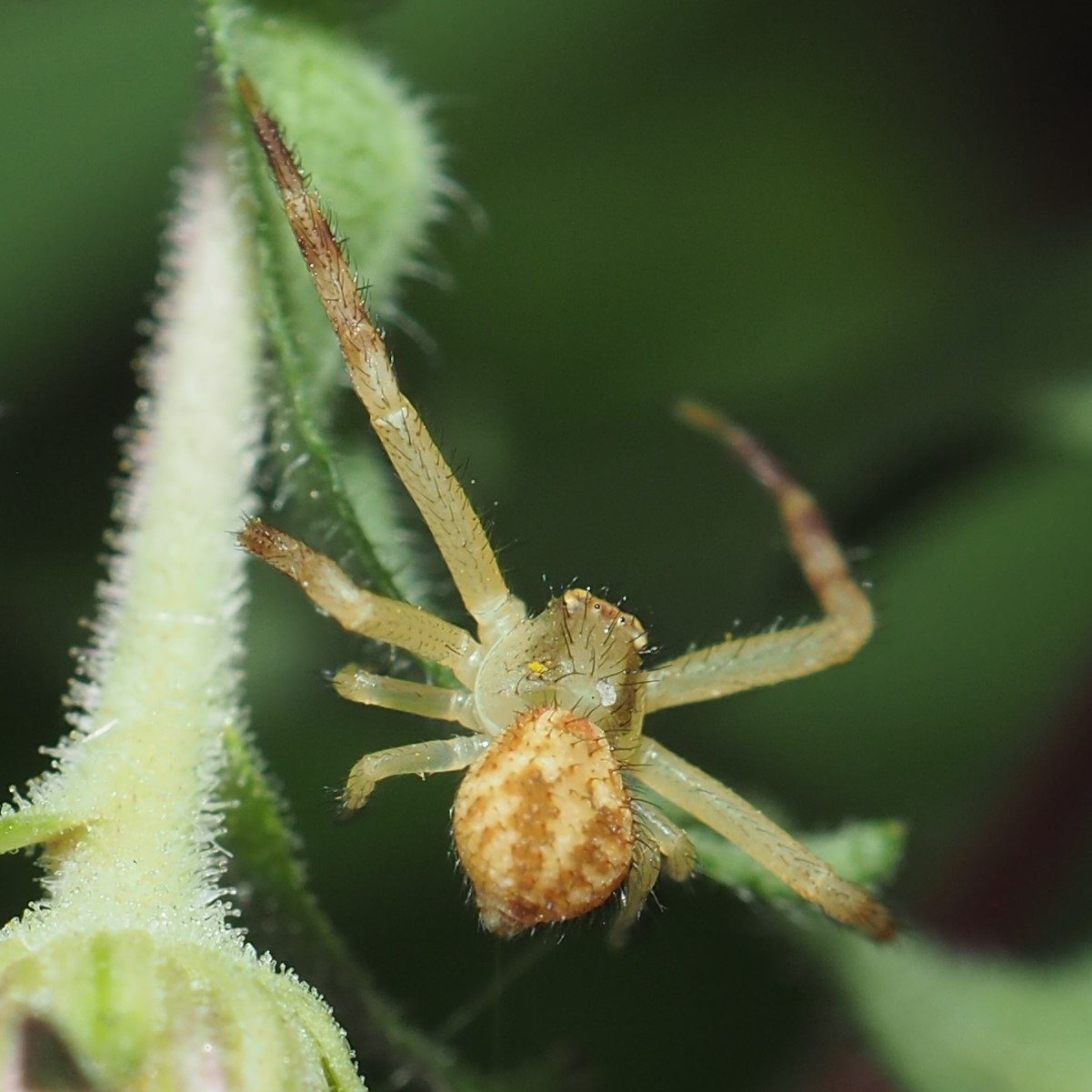
One more crab spider - this one in one of the large "Waterfall" Colchicums. The second shot zooms onto the spider. Third is of a different (single) variety of Colchicum, unlike the massively double-blooming "Waterfalls".



Here is an Ichneumonid Wasp (two images) inside my neighbor's screen.
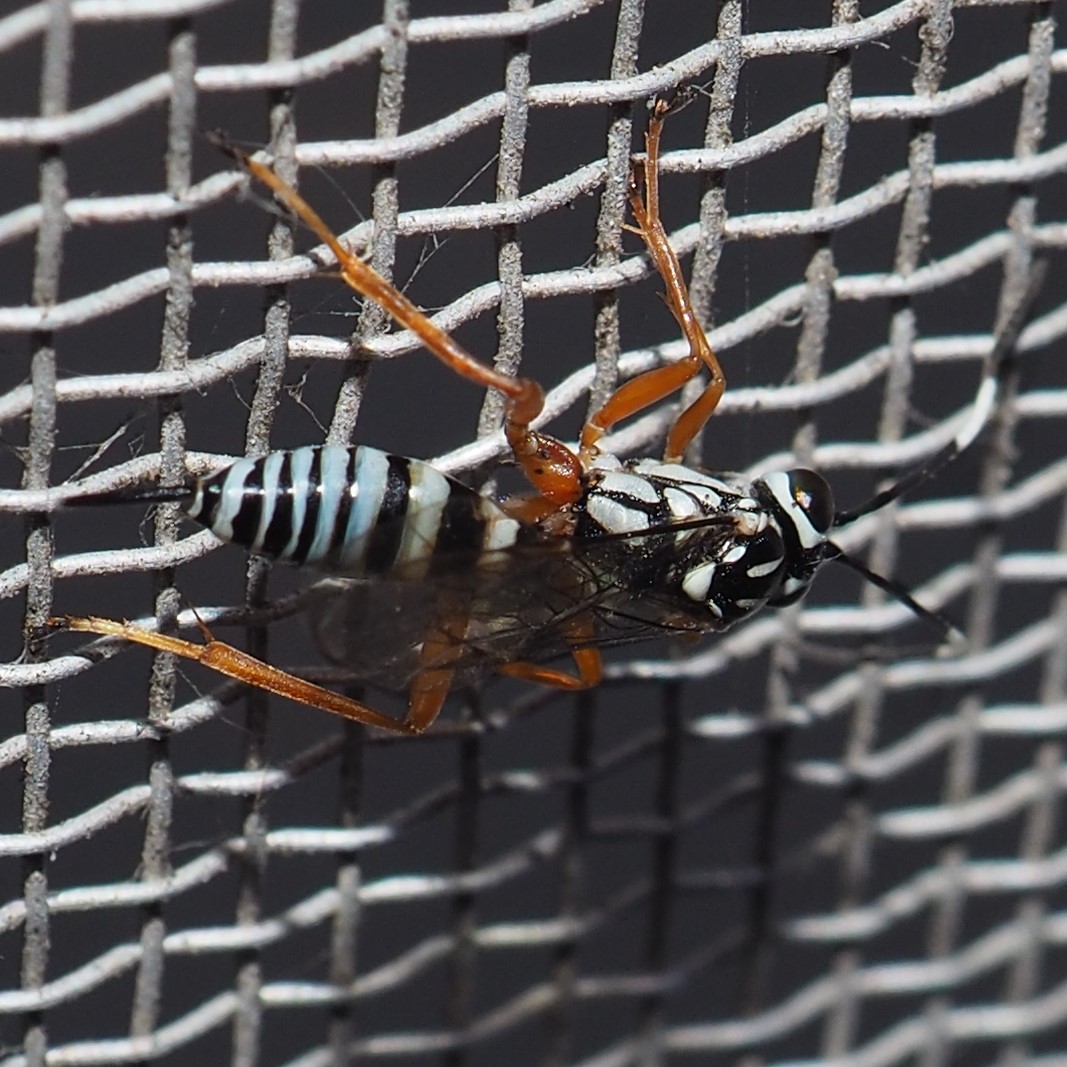
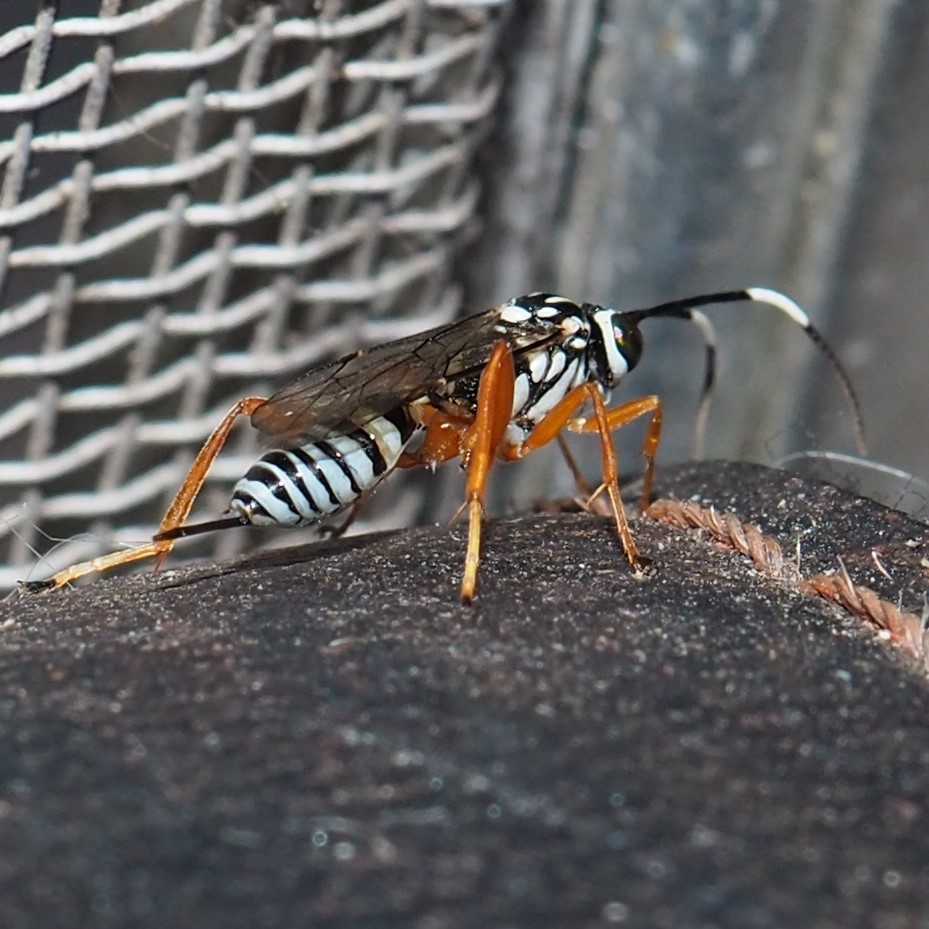

Here's one of the Dark Paper Wasps enjoying the little daisies too. They also appreciate what's left of the Goldenrod. Third is an Eastern Yellowjacket (Vespula maculifrons) worker, I believe.



Let's just tiptoe through the un-tulips for a bit. Here are some of those delicate Japanese Anemones. I didn't even notice the little Hover Fly on the leftmost flower! Next, the almost-blue Purple Asters.


The Pink Water Lily; the Goldenrod; the flower in the front garden that I can never remember the name of.
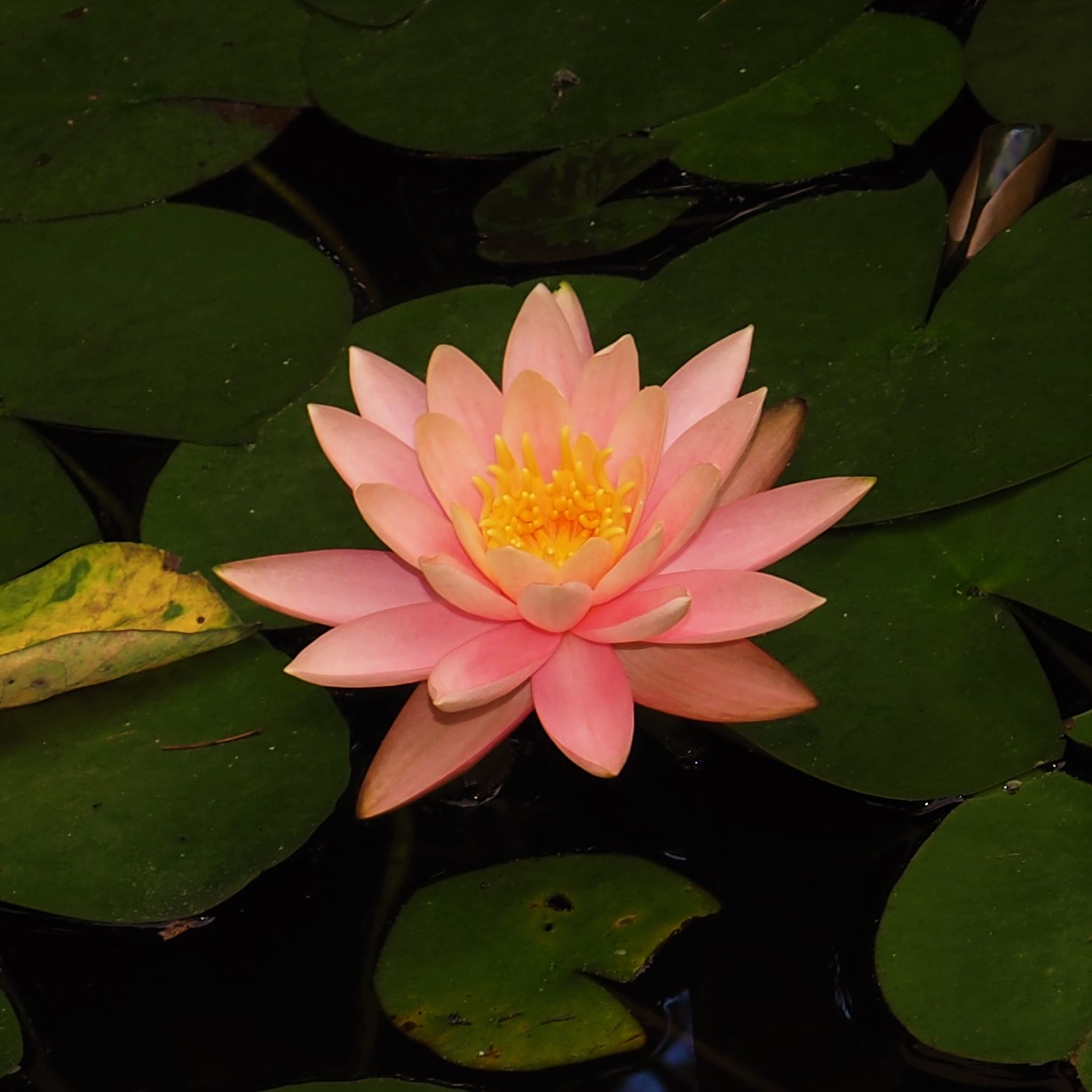


More Colchicums. Since we see these for so short a time, why not one more shot of them? A Mauve-ish Aster. And I couldn't resist re-running this deep pink Aster with an American beautiful Butterfly.
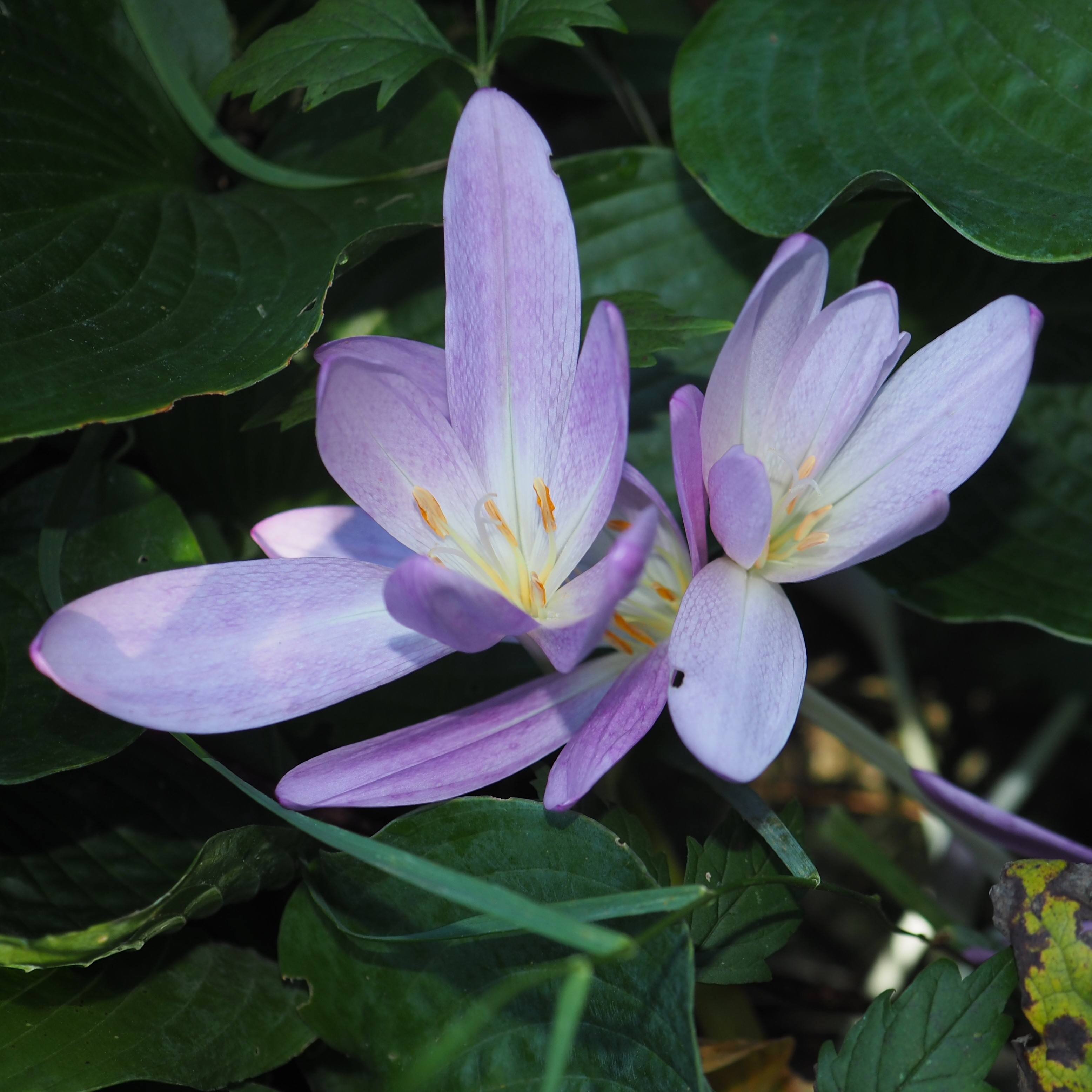
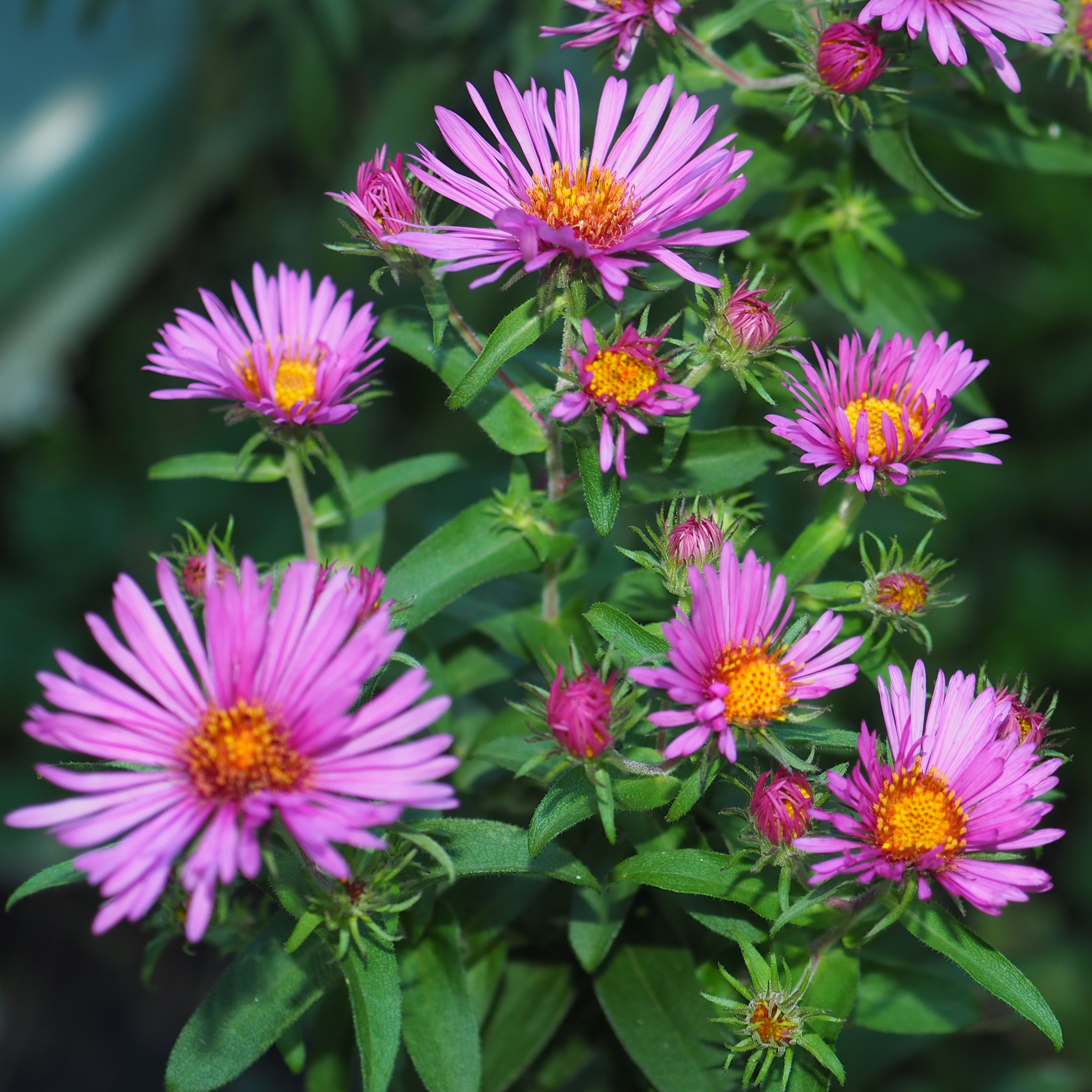

I'm about to turn the heat on in the house. It really is that time (though I may change my mind (I'm allowed to do that) in a day or two). Hope you are warm and safe where you are. Love to all of you!
Love, Martha
Back to September 22, 2019
Forward to October 6, 2019
Back to main menu
copyright Martha O'Kennon 2019




















































































































